Part 3
Growing activity in the High North. Opportunities and challenges
8 Environmental protection and environmental problems
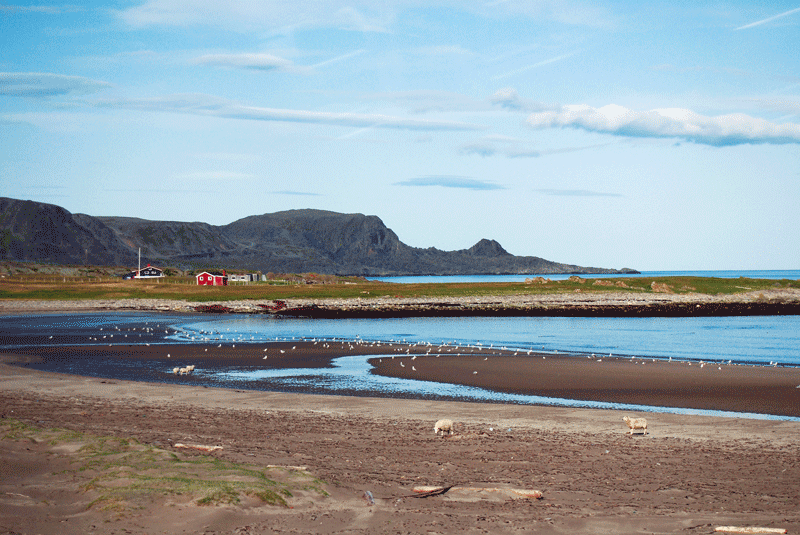
Figure 8.1 From the Varanger Peninsula.
Photo: Marianne Gjørv
The Government intends Norway to be the best steward of the environment and the natural resources in the High North. We will protect the environment in the High North and facilitate value creation and human activity while ensuring that ecosystems, ecological goods and services and biodiversity are maintained. The provisions of Chapter II of the Nature Diversity Act must be used as a basis when exercising public authority in a way that will have environmental impacts, so that Norway uses its resources sustainably and biological, geological and landscape diversity are protected through conservation and sustainable use, as required by section 1 of the Nature Diversity Act.
Activities that influence greenhouse gas emissions, pollution levels, resource use and spatial management must be in accordance with national targets and international commitments related to the climate and environment. Conservation of biodiversity must be a basic condition for all activities, in accordance with the goals and principles of the Nature Diversity Act, the Svalbard Environmental Protection Act, the Marine Resources Act and the integrated management plans for Norwegian sea areas. One of the overriding objectives of Norway’s Svalbard policy is to preserve the archipelago’s distinctive natural wilderness. The most recent white paper on Svalbard (Report No. 22 (2008–2009) to the Storting) discusses the specific goals and requirements that apply to management of the environment in Svalbard.
8.1 The natural environment as an essential basis for welfare and value creation
Long-term, integrated management of the environment and natural resources is crucial for securing the livelihoods of present and future generations. The diversity of species and habitats is essential for maintaining ecological processes and systems, which in turn form the basis for human settlement, value creation and welfare. In the High North, these links are particularly clear because much commercial activity is directly dependent on the natural environment and living resources. The cultural heritage also provides evidence of these links, especially cultural sites and remains and the traditions of indigenous peoples.
Norway’s land and sea areas are very valuable in environmental terms, and the Barents Sea is one of the most productive sea areas in the world, with over 200 fish species, thousands of benthic species, and large numbers of seabirds and marine mammals, including some of the largest seabird colonies in the world. High biological production also provides a basis for some of the largest fisheries in the world; the Northeast Arctic cod stock alone now supports an annual total allowable catch of over 700 000 tonnes.
The populations of polar bears and walruses in the northern part of the Barents Sea and Svalbard are among the healthiest in the world. Genetic diversity is high in the northern sea areas, and through marine bioprospecting, this can be used to acquire important knowledge and economically valuable services. North Norway has magnificent scenery and a unique cultural heritage that reflects the way its people have used the natural resources in the sea and on land for thousands of years. Many of the country’s healthiest stocks of wild salmon can also be found in North Norway. Most of the remaining area of undisturbed nature in continental Europe is in the Barents region. Svalbard is a large, continuous expanse of wilderness, and an example of successful, long-term environmental management.
The natural environment and cultural heritage of the region support activities of great economic and cultural importance, from fishing, hunting and reindeer husbandry to tourism. The biodiversity of the region also forms the basis for important commercial activities, including aquaculture and agriculture, and for the traditional way of life of indigenous peoples. For many people, close contact with the natural environment is crucial for their quality of life and for their sense of identity and of belonging to the region.
8.2 Pressures and impacts on the environment in the High North
Both local activities and external pressures have impacts on the environment in the High North. The most important external pressures are climate change, ocean acidification and long-range transboundary pollution. Local pressures include various types of land use and use of sea areas and exploitation of resources. Fisheries, aquaculture, reindeer husbandry and the development of energy and transport infrastructure are important factors. There are also a number of actual and potential sources of pollution at the local level, including shipping, oil and gas activities, industrial activities and nuclear facilities in Norway’s neighbouring areas.
Increased human activity combined with climate change is creating new environmental problems. Growing shortages of oil and minerals are resulting in rising prices, and the High North is becoming more accessible as the extent of the sea ice shrinks. These changes are fuelling interest in the region’s natural resources and in the new sea routes that are emerging. The Government will set high environmental standards for new activities and will protect particularly valuable and vulnerable areas against pressure that may have negative impacts.
Many of the populations of fish, mammals and birds in the High North exhibit large natural fluctuations. At the same time, the physical environment is changing as a result of climate change. These changes are expected to become more marked in the years ahead, and may disrupt the natural cycles of the Arctic environment. Species that are adapted to the extreme conditions in the high-Arctic environment will face more competition and may gradually be displaced by species from more southerly regions, changing the character of the ecosystems. Analyses of the population trends for various species in recent decades appear to be consistent with such changes.
The terrestrial environment in the High North is generally less affected by local activity than areas further south. This is partly because the cold climate results in low biological production in much of the region, and in consequence population density is low and there is little human activity. However, there are wide variations from one part of the region to another. In North Norway alone, we can find everything from the biologically rich and relatively densely populated coastal strip in Nordland to the uninhabited polar desert of eastern Svalbard.
In essence, the environmental problems in North Norway are the same as those in the rest of the country. As in other parts of the world, the most important causes of the decline in biodiversity and the loss of elements of the cultural heritage are physical alteration of the environment and changes in land use. Such developments also result in the loss of areas without major infrastructure development. Although there is generally less pressure on land in North Norway than further south, the same trends are apparent. However, overgrazing by domestic reindeer is a problem that is specific to reindeer husbandry areas in the High North. Around 12 % of the area of North Norway is protected.
The marine ecosystems in the most northerly waters are under pressure from climate change, ocean acidification and long-range transboundary pollution. In more southerly parts of the region and coastal areas, the greatest pressure is from local activities. Many seabird populations have declined dramatically, and considerable damage to benthic organisms has also been observed. Coral reefs in several areas have been damaged or destroyed by bottom trawling. In the past 10 years, the fisheries management authorities have focused increasingly on impacts on benthic communities, and a number of measures have been introduced to improve the situation. This is expected to reduce pressure from the fisheries.
Global warming is only one of several pressures on ecosystems and living resources in the High North. The cumulative environmental effects depend on interactions between a number of pressures and impacts. Climate change must therefore be considered together with other environmental pressures and important drivers of change. For example, the rising atmospheric concentration of CO2 is also leading to ocean acidification. The Arctic sea areas are the most sensitive to this because seawater absorbs more CO2 when the water temperature is low. Increasing ocean acidification will affect organisms with calcium shells, and in the long term it may have a serious impact on marine ecosystems and the opportunities to harvest from them.
The conservation of the wild salmon stocks in North Norway is an important issue, and the cumulative environmental effects on these stocks must not be allowed to increase. These stocks contribute to value creation in the region, and they are an important part of the natural resource base for Sami culture. The Tana river system is the most productive Atlantic salmon river in Norway and indeed in the world, and therefore extremely important both nationally and internationally. However, many of the wild salmon stocks in this river system are at an all-time low, mainly due to overfishing. It has long been known that part of the catch in the sea fishery for salmon in Finnmark county consists of fish from Russian rivers, and new studies show that at least 20 % of the salmon in this fishery originates from Russia. Norway will continue its dialogue and research cooperation with Russia on this issue. Fish farming has so far had less impact on many important wild salmon stocks in North Norway, particularly in Finnmark, than on stocks in other parts of the country, where there is intensive fish farming.
Marine bioprospecting is another important activity that is expected to expand. It is regulated by the Marine Resources Act and the Nature Diversity Act, and will only be carried out within environmentally sound limits.
There is growing global demand for mineral raw materials, and their prices are rising, and this is creating opportunities for new activities and value creation. However, the extraction of metals and minerals involves physical disturbance of the natural environment and requires sound management of waste and pollutants, and can result in environmental problems. The establishment of new mining activities and new transport, energy and industrial infrastructure may affect important habitats and ecosystems and remaining areas without major infrastructure development.
Local activity and land use have far less influence in Svalbard than in North Norway. With the exception of the established settlements and mining areas, the archipelago is still a more or less undisturbed wilderness, and the natural diversity of species and ecosystems remains largely intact. The only activities are outdoor recreation, tourism and research. There is also less pressure on the marine environment around Svalbard than in areas further south. However, the pace of climate change is high in Svalbard, and it is expected to have major environmental impacts, especially for species that are dependent on sea ice. There is growing tourism, and more activity and traffic is expected as the sea ice cover retreats. Protected areas cover 65 % of the land area of Svalbard and 87 % of its territorial waters. The Svalbard Environmental Protection Act sets out strict requirements for all types of activity on the archipelago, including activity outside the protected areas. This is a clear expression of the high priority Norway gives to environmental protection in its Svalbard policy.
The state of the environment in the High North and the Arctic depends to a large extent on activities outside the region and pollution originating elsewhere. Climate change, ocean acidification and long-range transboundary pollution are examples. Many migratory species are under pressure at times of year when they are not in Svalbard. New substances that are persistent, bioaccumulative and toxic may also cause problems.
Climate change may exacerbate the loss of biodiversity. According to the Intergovernmental Panel on Climate Change (IPCC), around 30 % of the world’s species will be at risk of extinction if the global mean temperature increase exceeds 2°C to 3°C relative to pre-industrial levels. The Arctic has been identified as one of the regions that will be most vulnerable to these processes. The Government considers it important for Norway to build up knowledge about how biodiversity and the living resources in the Arctic will respond to physical changes in environmental conditions. Knowledge of this kind will be crucial for developing effective adaptation strategies for environmental protection and natural resource management in the High North.
Climate change, ocean acidification and growing activity will put more pressure on the environment in the High North. Because of uncertainties and poor documentation of several factors, it is not possible to draw definite conclusions on the cumulative effects on the ecosystem of all human activities combined. However, a combination of several significant environmental pressures in the same area at the same time increases the risk of negative impacts. This underlines the importance of taking a precautionary approach to activities that could increase the pressure on, or risk of damage to, the environment in the High North.
8.3 A long-term, integrated environmental management regime
To ensure that biodiversity in the High North continues to provide the basis for economic and social welfare, it must be safeguarded through a long-term, integrated management regime. This is the only way to be sure that all activities and pressures are considered together. It is also essential if we are to avoid serious conflict between the development of commercial activities based on the region’s natural resources, environmental protection considerations and activities based on sustainable use of ecosystems. A long-term, integrated management regime must be based on sound national legislation and frameworks and on cooperation and coordination across national borders. These are basic principles of Norwegian legislation – the Nature Diversity Act, the Svalbard Environmental Protection Act, the Water Management Regulations and the Marine Resources Act – and of the integrated management plans for ecosystem-based management of Norwegian sea areas. Norway promotes these principles in its bilateral cooperation with Russia, as well as in the Arctic Council.
An integrated management regime must be based on the best available knowledge. The Government therefore considers it important to take a knowledge-based approach, in which the environmental impacts are thoroughly assessed before decisions are made on new activities, and in which there is transparency about the challenges involved and conflicting interests and considerations. This allows better assessments of which requirements should apply to new activities and what limits should apply to human activity.
Work on the integrated management plans for the Norwegian sea areas and the integrated management plans for inland, transitional (brackish) and coastal waters under the Water Management Regulations provide good examples of processes that make it possible to clarify the overall framework for activities and thus facilitate the coexistence of different industries. This kind of integrated approach can also be instrumental in ensuring that business interests, local, regional and central authorities, indigenous peoples, environmental organisations and other interest groups all have a common understanding of the goals for management of the environment.
The Government attaches great importance to knowledge-building in the environmental field, both at national level, through initiatives such as the Fram Centre in Tromsø, and at international level, through cooperation with fellow members of the Arctic Council and in other regional forums. The Government’s efforts to promote the generation of knowledge and expertise on the High North are discussed in more detail in chapter 3.4. At national level, it is essential to ensure that all projects that may affect the natural environment are examined in accordance with the requirements for preparatory work and environmental assessment set out in current legislation.
Textbox 8.1 The Nature Diversity Act
Chapter II of the Nature Diversity Act contains provisions on how the authorities are to ensure that they have the best possible basis for making official decisions under other legislation that may affect biological, geological and landscape diversity. One of the fundamental requirements is that all decisions must be based on scientific knowledge of how a project may affect biological, geological or landscape diversity. When determining whether or not a project is to be permitted, or whether it is to be made subject to conditions, the principles of environmental law set out in the Act must be used as guidelines. This means that the cumulative environmental effects on an ecosystem must be considered. The costs associated with preventing or limiting any damage caused by a project must be covered by the project owner (the user-pays principle). Environmentally sound techniques and methods of operation must be used, and activities must be sited in a way that prevents or limits damage. If too little is known about possible environmental impacts, the precautionary principle must be applied.
The principles set out in the Nature Diversity Act supplement the requirements of other legislation regulating the activities of various sectors, such as the Marine Resources Act, the Mineral Resources Act, the Petroleum Act and the Offshore Energy Act, and decisions made on the basis of more general legislation such as the Planning and Building Act and the Pollution Control Act. When the relevant sectoral authorities make decisions under such legislation, they will also make use of the principles set out in the Nature Diversity Act during preparatory work and when exercising discretionary powers. In other words, the Nature Diversity Act, together with sectoral legislation, determines the framework for activities and for protection of biological, geological and landscape diversity. Measures under this Act are also to be weighed against other important public interests, as set out in section 14.
8.4 Targeted regional and global environmental cooperation
Sustainable management of the natural environment and cultural heritage in the High North can only be achieved through a combination of targeted national efforts and international cooperation. Norway must cooperate first and foremost with the countries with which we share these assets.
Norway’s High North policy is significant in this context because it includes a foreign policy dimension that is important for developments in the region, and regional cooperation in forums that play a key role in work on environmental and climate change issues (for example the Arctic Council, the Barents cooperation and Norway’s bilateral cooperation with Russia). Various cooperation forums are discussed further in chapter 7. Norway’s ability to fulfil its international obligations under agreements in areas including climate change, pollution, conservation of biodiversity and protection of cultural heritage depends partly on the success of cooperation in the High North. Many populations of fish, birds and mammals in the High North have a wide distribution range and migrate across national borders. Close cooperation between the Arctic coastal states on management of species and their habitats is vital for achieving sustainable social and economic development in the region. Norway has enjoyed constructive and successful fisheries cooperation with Russia since the 1950s.
Although the international legal framework for environmental cooperation in the High North and Arctic is in place, not all the Arctic states have signed or ratified key conventions. The Government will work actively to promote closer and more binding environmental cooperation between the Arctic countries, with a special emphasis on the protection of vulnerable species and ecosystems.
Broad-based international agreements that regulate releases of pollutants and activities in different sectors are needed for management of the environment and to deal with environmental pressures that are mainly due to activities outside the region. Norway’s High North policy has an important role to play here through knowledge development and the provision of input to relevant forums, for example as part of Arctic Council initiatives. The knowledge generated and compiled must also be communicated to forums for regional and global agreements, so that environmental problems in the High North can be taken more fully into account. Norway will continue its efforts in this field in cooperation with the other Arctic countries.
The High North acts in many ways as a sink for persistent organic pollutants, which are transported with air and ocean currents from more southerly latitudes. National prohibitions against many persistent, bioaccumulative and toxic substances have gradually been extended through regional and global agreements. Cooperation under the Arctic Council makes an important contribution to this work through monitoring, compilation of data and assessments of the pollution situation in the Arctic.
Cooperation between the Arctic countries in this field continues to be very important. This includes cooperation on monitoring of levels of pollutants, on assessments of whether action is needed to deal with inputs of new pollutants to the Arctic environment, and on action to deal with specific sources of pollutants within the Arctic region. Monitoring also provides important information on changes in Arctic ecosystems, including changes that affect economically valuable species and environmental impacts on threatened species. In the Government’s view, this work must continue to have high priority, both within the Arctic Council and in Norway’s environmental cooperation with Russia.
The Government will shape its High North policy and organise its cooperation with other countries in the region so that they support the achievement of Norwegian environmental targets that apply to North Norway, Svalbard and Norwegian sea areas, and efforts to develop binding international agreements to mitigate climate change and limit long-range transboundary pollution and other external pressures on the environment in the High North. The Government will use the relevant cooperation forums to promote integrated, ecosystem-based management of the environment throughout the Arctic. The Government will make use of targeted international cooperation on research, monitoring and environmental assessments to strengthen knowledge about the environment and climate change in the High North. It will also cooperate with other countries in the region to build up and make use of knowledge on the values related to ecosystem services, and on ways of taking their value more fully into account in decision-making processes for activities in the High North.
9 Knowledge-based integrated marine management
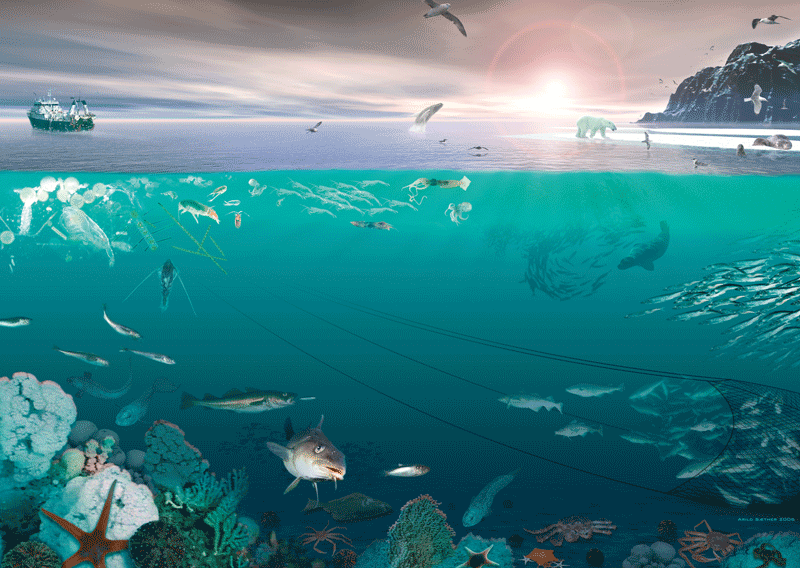
Figure 9.1 Marine management.
Illustration: Institute of Marine Research
Norway is a maritime nation and a nation rich in marine resources. The Government’s goal is for Norway to be a pioneer in developing an integrated, ecosystem-based marine management regime. Our work on management plans for Norwegian sea areas has attracted considerable international attention. The purpose of the management plans is to provide a framework for value creation through the sustainable use of natural resources and ecosystem services in the sea areas and at the same time maintain the structure, functioning, productivity and diversity of the ecosystems. The management plans are thus a tool for both facilitating value creation and maintaining the high environmental value of the sea areas. In the management plans human activities are viewed in relation to one another and the overall impact of these activities on the marine environment and the ecosystems is assessed. A clarification of the overall framework for activities in the sea areas helps to facilitate coexistence between different interests, in particular between the fisheries, petroleum and maritime transport industries.
The management plans require systematic monitoring of the marine environment and the implementation of measures to ensure an ecosystem-based approach to the management of marine resources.
The integrated management plan for the Barents Sea–Lofoten area was presented as a white paper in 2006 (Report No. 8 (2005–2006) to the Storting). The plan will remain effective until 2020 but will be updated at regular intervals. The first update of the plan was presented as a white paper in March 2011 (Meld. St. No. 10 (2010–2011)). In the present white paper, discussion of the management and exploitation of renewable and non-renewable resources in the northern sea areas is based on the updated management plan for the Barents Sea–Lofoten area.
The geographical scope of the management plans is limited to areas under Norwegian jurisdiction. However, the transboundary nature of some of the ecosystems and some aspects of the activities concerned makes cooperation with other countries essential.
Even though the eastern (Russian) part of the Barents Sea falls outside the geographical scope of the plan, the management plan for the Barents Sea–Lofoten area has implications for our relations with Russia. During the preparation of the management plan, Norway sought to keep Russia informed of the direction, content and progress of the planning process, through established bilateral cooperation forums (in the areas of the environment, fisheries and energy). The Russians were also invited to contribute to the process by providing relevant information. The increasingly broad cooperation under the Joint Norwegian–Russian Commission on Environmental Protection in recent years can be seen as one positive outcome of this approach. A concrete result of this cooperation is the preparation of a joint Norwegian–Russian environmental status report for the Barents Sea (presented in the autumn of 2009). In the updated management plan the Government announced that it would cooperate with Russia on the establishment of an integrated Norwegian-Russian monitoring programme for the Barents Sea, with the aim, in particular, of assisting in the development of a Russian management plan for the Russian part of the Barents Sea. Cooperation on this issue began under the Joint Norwegian–Russian Commission on Environmental Protection in 2011.
Sound and sustainable environmental and natural resource management is a key – and at the same time a cross-sectoral – element of Norwegian policy for integrated marine management. This also applies to the High North. It is a central concern in work on the management plans and also a concern expressed in our cooperation with other countries. By adopting an ecosystem approach to marine management, Norway is at the forefront of international efforts in this area and a responsible steward of the abundant resources in the Arctic.
The Government will implement the measures set out in the management plans, and will continue ongoing efforts to strengthen the knowledge base with a view to incorporating new knowledge in future updates of the plan. The contacts alreadyif established with other countries and with regional actors will be strengthened to enable the development of robust regional cooperation on marine management in the High North, based on an integrated, ecosystem-based approach. Norwegian–Russian cooperation on the marine environment will be continued and expanded in scope with a view to establishing an integrated Norwegian–Russian monitoring programme for the Barents Sea and developing a concept for a Russian management plan for the Russian part of the Barents Sea. The Government will ensure the collection of basic data as well as the development and exchange of scientific methodology so as to enhance work on the integrated marine management plans. In the view of the Government, this is important both as a means of strengthening our own work on integrated management plans and as a way of assisting other countries with similar processes. Particular priority will be given to cooperation with Russia on the development of relevant methodology. The Government’s long-term aim is for all countries that are responsible for managing sea areas adjacent to those under Norwegian jurisdiction to develop integrated management plans. This topic is being given priority in our contacts with relevant actors such as the EU and Canada.
10 Maritime safety, oil spill preparedness and response, and search and rescue capacity
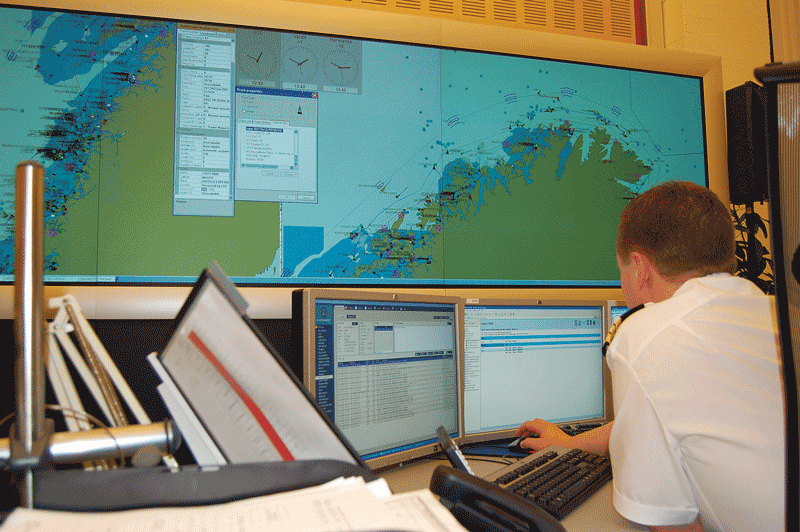
Figure 10.1 The Vardø vessel traffic service centre.
Photo: Norwegian Coastal Administration.
10.1 Maritime safety and preparedness and response to acute pollution
Considered in isolation, an increase in maritime traffic and in oil and gas activities means that there is an increased risk of accidents and pollution. The white paper First update of the Integrated Management Plan for the Marine Environment of the Barents Sea–Lofoten Area, Meld. St. 10 (2010–2011), includes an in-depth discussion of environmental risk analyses, oil spill preparedness and response and the prevention of acute pollution in the northern sea areas.
In addition, reduced ice cover will improve conditions for shipping and give easier access to natural resources, which in turn may lay the foundation for new industrial activities. Growing activity may increase the need for regulation in the northern sea areas and may have implications for search and rescue capacity and oil spill preparedness and response.
The Government wants Norway to play an active role in the development of national and international rules and industry standards and in knowledge-building and information-sharing to reduce risk. Norway will also encourage companies to develop management and quality assurance systems and promote enhanced awareness throughout the value chain, both of which are essential for ensuring a high standard of safety.
By making use of new technology, the Government has gained a better overview of Norway’s large sea areas in the High North. This makes it easier to detect anomalies at an early stage, which in turn strengthens Norway’s ability to prevent or limit the impact of accidents.
It is possible to reduce risk by working systematically. In recent years, the Government has given priority to improving maritime safety and preparedness and response to acute pollution in the High North. The launch of the AISSat-1 satellite in the summer of 2010 has extended the monitoring range of the Automatic Identification System (AIS), which plays a key role in monitoring shipping traffic and ensuring maritime safety. The satellite gives the vessel traffic service centres a better overview of activities far from the coast. It also gives the rescue coordination centres valuable vessel information during marine rescue operations, both in instances where a vessel is in distress itself and in cases where vessels in distress can be helped by other vessels.
The establishment of a national forum on oil spill preparedness and response has strengthened cooperation between public and private actors. The forum is headed by the Norwegian Coastal Administration, and focuses particularly on the High North. More accurate and reliable weather forecasts provide a better basis for planning maritime activities and fishing, and help to improve safety standards. The construction of a new meteorological radar at Gednje on the Varanger peninsula is under way, and is due to be completed in the summer of 2012. This will provide better meteorological radar coverage all along the coastline of Troms and Finnmark counties.
In 2010, in line with the aim of further developing the Norwegian Coastal Administration’s maritime safety expertise as mentioned in New Building Blocks in the North, a national centre of expertise on maritime safety, oil spill response and monitoring was established, linked to the Vardø Vessel Traffic Service Centre. In 2011, NOK 5 million was allocated to the centre under the budget of the Ministry of Fisheries and Coastal Affairs. The centre has been assigned projects in the field of oil spill preparedness and response in Arctic areas and traffic monitoring tasks. It will also report on and monitor high-risk traffic along the coast.
In various arenas, Norway has also given priority to developing cooperation with Russia on maritime safety and preparedness and response to acute pollution. Close cooperation has been established between Norway and Russia on maritime safety and oil spill preparedness and response in the Barents Sea.
In 2006, Norway and Russia signed a memorandum of understanding on strengthening maritime safety cooperation in the Norwegian Sea and the Barents Sea. The MoU and a bilateral agreement on oil spill preparedness and response are being followed up in working groups. The working group on maritime safety is drawing up a proposal for a vessel reporting system for the Barents region. There is exchange of information on maritime traffic at agency level. Norway and Russia carry out joint oil spill response exercises every year.
The Government considers it important to strengthen cooperation on emergency preparedness and response to acute pollution in Arctic waters. Norway played an active role in the decision to launch the development of an international instrument on Arctic marine oil pollution preparedness and response, which was reached at the Arctic Council’s Ministerial Meeting in Nuuk in May 2011. A specially appointed task force, jointly led by the US, Russia and Norway, will present the result of these efforts at the Ministerial Meeting in 2013. The Government is giving high priority to this work. Norway will also take over the chairmanship of the Arctic Council’s Emergency Prevention, Preparedness and Response (EPPR) Working Group in 2011, which will further strengthen our involvement in developing closer regional cooperation in the area of oil spill preparedness and response.
The Government’s High North committee has pointed out that Norway, as one of the countries in the world with most expertise in the areas of maritime safety and preparedness and response to acute pollution, has a good starting point for developing this as a business area in its own right. This is reinforced by the fact that Norway has strict statutory requirements, a high level of expertise, strong research institutions, a constructive climate of cooperation between the various actors and a large number of companies with cutting-edge expertise.
The Government’s aim is that Norway should be at the forefront of international efforts to promote maritime safety and preparedness and response to acute pollution in the High North.
The Government intends to facilitate cooperation between oil companies, the supplier industry and knowledge institutions so that they can be at the forefront technologically and can gain leading market positions as regards the development and export of oil spill preparedness and response technology.
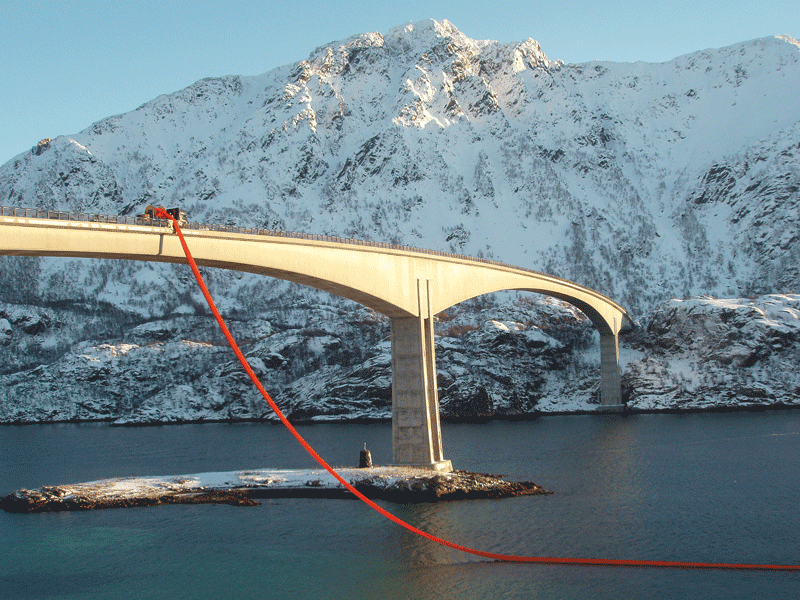
Figure 10.2 Testing an oil boom from the bridge across Raftsund in Nordland county.
Photo: NorLense.
Russia is also focusing more on the need to develop more reliable technology for operations in Arctic waters and more effective oil spill preparedness and response. In the Government’s view, it is very positive that Russia has taken the initiative to give this issue even higher priority in our bilateral energy dialogue. Russia too has ambitions to develop oil spill preparedness and response technology as a major business area in the Barents Sea and internationally. The Government intends to make use of the strengthened cooperation between Norway and Russia on oil spill preparedness and response technology to promote Norwegian business interests.
The joint Norwegian–Russian Exercise Barents has been held every year since the 1980s. It is based on bilateral agreements between Norway and Russia, the most recent of which is the Norwegian–Russian search and rescue agreement of 4 October 1995. Traditionally, the exercise was a maritime search and rescue exercise involving the Joint Rescue Coordination Centre Northern Norway and the Maritime Rescue Coordination Centre in Murmansk. Norway and Russia have responsibility for planning, coordinating and carrying out the exercise in alternate years. In 2006 the exercise was expanded to include preparedness and response to acute pollution, based on the 1994 agreement between Norway and Russia on oil pollution preparedness and response in the Barents Sea. A search and rescue operation is often followed by an oil spill response operation, and so it is important to have close operational coordination between the various actors. For this reason, the Norwegian Coastal Administration also participates in the exercise. The Joint Rescue Coordination Centre Northern Norway and the Maritime Rescue Coordination Centre in Murmansk also cooperate closely in connection with real incidents.
Textbox 10.1 Barents 2020: BarentsWatch
BarentsWatch is a civilian monitoring and information system, the aim of which is to make relevant information about the northern sea and coastal areas available to users, the authorities and decision-makers, and to ensure that information is shared effectively. BarentsWatch will make use of and coordinate existing services, thereby providing an overall picture of activities in our sea areas and conditions under the surface of the sea.
The BarentsWatch concept has been developed as part of the Government’s High North strategy, and it comprises two systems, one open and one closed. The Government has given the Ministry of Fisheries and Coastal Affairs and the Norwegian Coastal Administration the task of setting up the open system, the BarentsWatch public information portal, in close cooperation with relevant institutions and research communities in various parts of the public administration. The Ministry of Fisheries and Coastal Affairs heads the BarentsWatch ministerial group, in which the Ministry of Foreign Affairs, the Ministry of the Environment, the Ministry of Trade and Industry, the Ministry of Defence, the Ministry of Justice and Public Security, the Ministry of Education and Research and the Ministry of Petroleum and Energy also participate. The BarentsWatch public information portal will come into operation in 2012; meanwhile the Government will continue to work on the closed system.
In 2010, BarentsWatch received an allocation of NOK 20 million under the Ministry of Foreign Affairs’ Barents 2020 grant scheme. In 2011, BarentsWatch was allocated NOK 20 million in funding under the budget of the Ministry of Fisheries and Coastal Affairs. The Government’s budget proposal for 2012 includes an allocation of NOK 30 million to BarentsWatch under the Ministry of Fisheries and Coastal Affairs’ budget.
BarentsWatch open system – public information portal
The BarentsWatch public information portal will enable various institutions in the public administration to share their data more easily and make it available to everyone. It will develop functions such as map services, and will provide editorial content for the general public in Norway and worldwide – for individual citizens, the media, the private sector, educational institutions and organisations with responsibilities within marine and maritime administration and research. The operations and development centre for the public information portal will be located in Tromsø.
BarentsWatch closed operational system – portal available to government agencies only
A number of government agencies share management responsibilities for Norwegian coastal and marine areas. Between them, these agencies have a large volume of quality-assured information on activities in Norwegian coastal and marine areas. This information is currently stored in the agencies’ internal systems, and is only to a limited extent shared electronically with other agencies.
The plan is for the closed system to give government agencies that have operational responsibilities at sea access to information that is based on a joint evaluation of the situation, which in turn can provide the basis for improved operations, across different areas of responsibility. Work on the closed system is continuing. Surveillance by the Armed Forces and information gathering on the military situation are continuing as before and are unaffected by the development of the BarentsWatch closed system.
10.2 Search and rescue
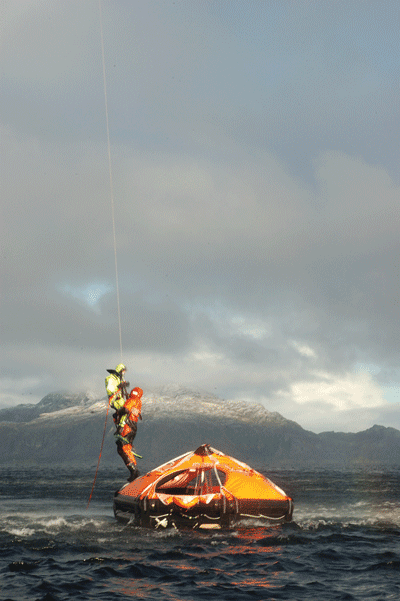
Figure 10.3 A rescue operation.
Photo: Vebjørn Karlsen / 330 squadron
Long distances, a demanding climate and limited availability of rescue personnel and equipment are characteristic of the Arctic region. This means that three considerations are crucial. Firstly, it is important to prevent accidents, because the consequences for both people and the environment will often be greater in the event of accidents in the High North than elsewhere. In the Government’s view, particularly stringent maritime safety standards are therefore required. Secondly, cooperation between the countries in the region is essential for making effective use of the rescue personnel and equipment available, and for ensuring that rescue operations are conducted as swiftly as possible. Finally, it is important to be aware that time considerations, the distances involved and the harsh climate will make some rescue operations impossible, regardless of the resources allocated to search and rescue services.
Responsibility therefore lies with individual companies and their industry organisations to work systematically to reduce the risk of accidents, and to ensure that they are able to manage crises themselves to a greater extent than is required in other waters. The Government wishes to contribute to openness about the problems involved, and to the development of knowledge and transfer of experience.
In the Ilulissat Declaration (2008), the five Arctic coastal states Canada, Denmark, Norway, Russia and the US stated their intention of strengthening search and rescue capabilities and capacity around the Arctic Ocean through cooperation and the sharing of information. The Arctic Search and Rescue Agreement between the member states of the Arctic Council (see Chapter 7.2) establishes legally binding search and rescue cooperation, including better regional organisation of search and rescue services in the Arctic. Under Article 98 of the Convention on the Law of the Sea, every coastal state must promote the establishment, operation and maintenance of an adequate and effective search and rescue service, and must cooperate with neighbouring states through regional arrangements as circumstances require.
Most of the Arctic has already been divided into search and rescue regions (SAR regions), but in certain areas the division of responsibility is unclear or inappropriate. Norway, Denmark (Greenland) and Russia have therefore agreed on a more suitable delimitation of our SAR regions. Norway’s SAR region has been extended, so that it now includes the area north of Svalbard and to the North Pole, and its border with the Russian SAR region has been moved slightly further east. This gives a natural division of responsibility between the various countries, and reflects their actual search and rescue capacity.
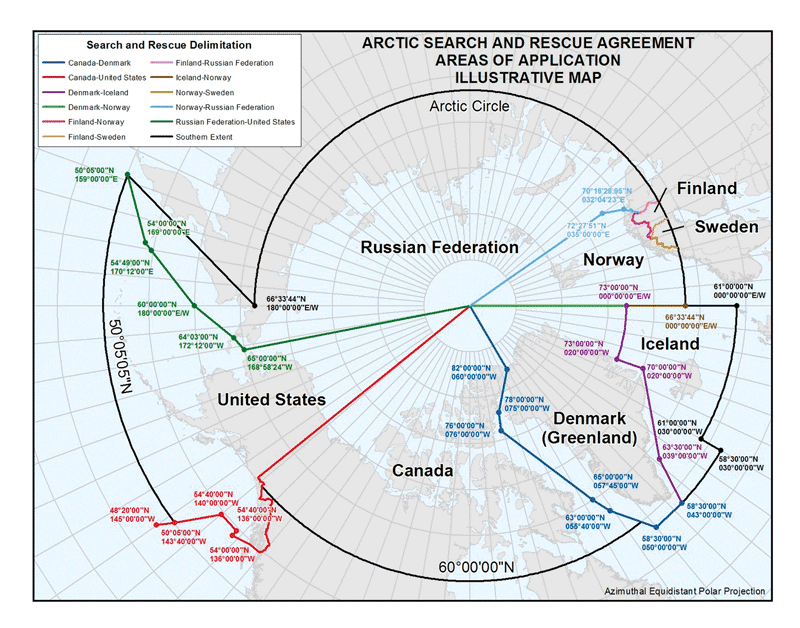
Figure 10.4 Search and rescue responsibilities in the Arctic.
A search and rescue (SAR) agreement will not solve all the problems caused by an increase in maritime traffic in the Arctic. Long distances may mean that it will not be possible to reach those in distress in time. The International Maritime Organization (IMO) has prepared guidance for ships operating in areas remote from SAR facilities. One of the recommendations is that voyage “pairing” should be considered, so that if two or more ships are operating in the same general area at the same time, each can be used as a SAR facility in case of accident to the other. Longyearbyen may become more important as a base for search and rescue and preparedness and response to acute pollution as activity in the Arctic Ocean increases. This is described in more detail in the most recent white paper on Svalbard (Report No. 22 (2008–2009) to the Storting).
Because of its global coverage, the satellite-based distress alert system COSPAS-SARSAT is an important tool for international search and rescue operations. Since 1982 Norway has participated in COSPAS-SARSAT and has had local user terminals, or ground receiving stations, in Tromsø, Fauske and Svalbard. The Joint Rescue Coordination Centre Northern Norway in Bodø is responsible for responding and initiating search and rescue operations, and for passing on distress alert messages to Greenland, Iceland, Sweden, Denmark, Finland, Estonia, Latvia and Lithuania.
The Government has submitted a draft resolution to the Storting (Prop. 146 S (2010-2011)) proposing that the search and rescue service in Svalbard should be strengthened. The draft resolution proposes that from 2014, the Governor of Svalbard’s helicopter service should have two large helicopters and a better response time, compared to the one large helicopter and one medium-sized helicopter it has today. The reason for these proposals is that Norway is an important actor and experienced participant in search and rescue operations in Arctic waters.
It is currently not possible for ships to use broadband communication in the area between Svalbard and the North Pole. In the longer term, possible broadband solutions for this area should be explored, as maritime traffic is expected to increase over the coming decades.
The Government will maintain and improve Norway’s capability for effective search and rescue to ensure that Norway can carry out search and rescue operations in its own and adjacent SAR regions. The purchase of new rescue helicopters would greatly improve the helicopter service. The Government has started a procurement process for new rescue helicopters with a view to having them in place by 2020. The new helicopters will have a longer range, greater cargo capacity and better search and rescue equipment. Growing activity in the High North will be one of the factors taken into account in dimensioning the future service. The resources available to the Armed Forces, including the Coast Guard, are also important for search and rescue operations and preparedness and response in the High North.
Other Arctic countries are also strengthening their rescue helicopter capacity in the High North. Iceland is participating in the Norwegian procurement process. Denmark has introduced large, long-range rescue helicopters at all its bases, and Canada is in the process of replacing its helicopters with new, long-range rescue helicopters. However, the Norwegian Government’s ambitions for its rescue helicopter service are currently not matched or surpassed by any other country.
11 Fisheries, aquaculture and marine bioprospecting
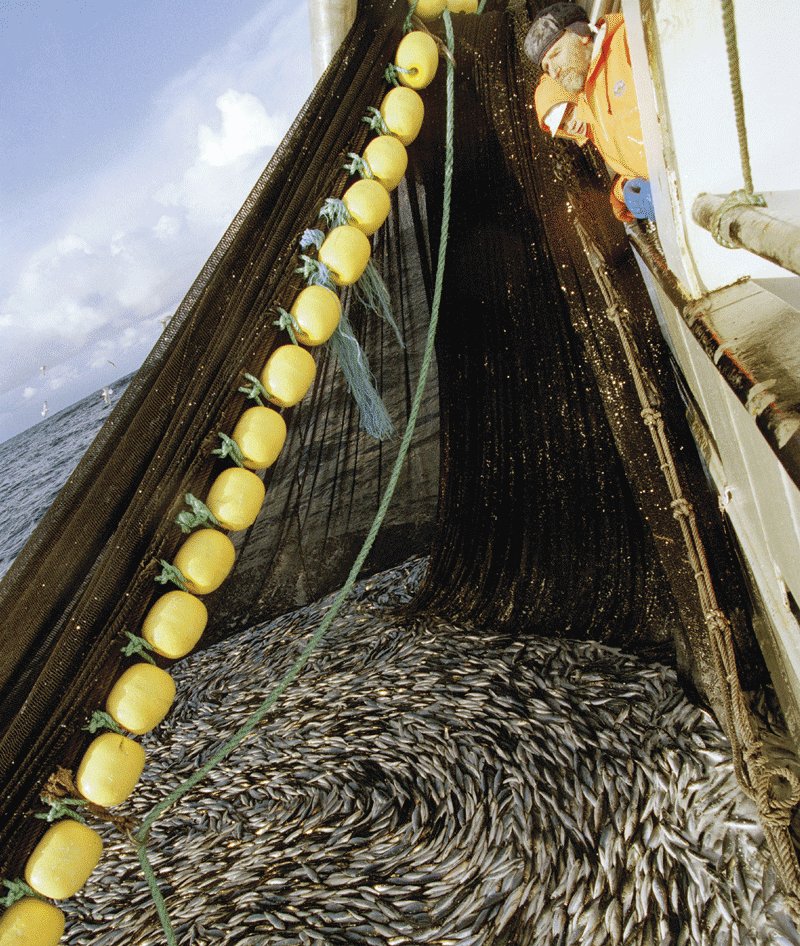
Figure 11.1 From the Lofoten cod fishery.
Photo: Norwegian Seafood Export Council.
Norway is responsible for the management of huge sea areas that are home to some of the world’s richest fish stocks. The fisheries sector is Norway’s second largest export industry, after the oil and gas industry, and Norway is the world’s second largest exporter of fish and fish products after China. The fisheries sector (fishing, aquaculture and fish processing) provides employment for almost 5 % of the labour force in North Norway and is very important for maintaining settlement patterns. In addition, access to high-quality protein is of great strategic importance in a world with a constantly growing population and where people are becoming increasingly health conscious.
Norway’s ambition is to be the world’s leading seafood nation. This means that we must be at the forefront of developments in knowledge in areas such as sustainable use of resources, the marine environment, the climate system, product developments and markets.
The fisheries sector is innovative: technological advances make fishing operations more efficient, and new industries arise out of the knowledge and activity generated. In the 1970s and 1980s, aquaculture and fish farming were new industries; now marine bioprospecting initiatives offer new opportunities for sustainable value creation in a number of industrial sectors.
11.1 The fisheries industry in the High North
The fisheries sector has always played an important role both as a livelihood and as a mainstay of the local culture in the High North. In recent decades, the sector has undergone major structural changes, and is now a modern and efficient industry. The number of actors has been reduced, but fishing and aquaculture are still of great importance for employment and economic activity in many coastal communities. Sustainable harvesting is a fundamental principle of fisheries activity, in the High North as elsewhere, and a long-term approach to management has resulted in a very robust resource base.
In 2009, 1.17 million tonnes fish were landed in the three northernmost counties of Norway. According to figures from Statistics Norway, the total landed value of the catch in the Barents Sea–Lofoten area was NOK 6.3 billion in the same year, or 56 % of the total landed value for Norwegian fishing vessels.
Today the Barents Sea is home to the world’s largest cod stock, the haddock stock is at a record level, and the capelin stock is also strong. During the past 10–12 years, the shared Norwegian–Russian fish stocks have been managed according to long-term strategies based on the precautionary principle. This has been a very successful approach, which has helped to rebuild stocks that were previously overfished.
In recent years, a great deal of progress has also been made in harmonising the rules for cod and haddock fishing in the Barents Sea. For example, uniform rules on mesh sizes and minimum sizes have now been adopted that apply to both Norwegian and Russian waters.
The Barents Sea fisheries make a key contribution to value creation and the maintenance of viable coastal communities in North Norway. In 2010, the landed value of Norwegian catches harvested from the Norwegian–Russian joint stocks in the Barents Sea was about NOK 4.2 billion, and the total export value was about NOK 7 billion.
The aim is to continue the close cooperation between Norway and Russia within the framework of the Joint Norwegian–Russian Fisheries Commission (see Box 11.1), so that the Barents Sea fisheries can provide a model for international resource management. The new maritime delimitation treaty includes an annex that is intended to facilitate the continuation of this cooperation.
The Commission has established the most important fisheries management principles for the future. Quota negotiations used to be the main issue, but now that agreement has been reached on quota-sharing and a management strategy, this is more or less a technicality. With this as a basis, the Norwegian–Russian fisheries cooperation can be developed into a broad strategic partnership, in which the two countries both promote these management principles in multilateral forums.
Agreement on how to share the available resources and a common understanding of the importance of long-term, sustainable marine management are of crucial importance for the close fisheries cooperation between Norway and Russia. The Norwegian and Russian authorities have made a concerted effort to combat illegal, unreported and unregulated (IUU) fishing in the Barents and Norwegian Seas in recent years, which is an important reason why the fish stocks in these areas are now in such good condition compared with stocks elsewhere. IUU fishing used to be a serious problem, but has been drastically reduced by painstaking efforts and the introduction of new measures. In 2009 and 2010, no IUU fishing of cod or haddock was registered in these sea areas. This is a victory for the environment, for the fisheries authorities in Norway and Russia, and for law-abiding fishermen and society as a whole. As a result of these efforts, resources valued at over NOK 1 billion a year are no longer being removed by criminal networks, and can be harvested for the common good by law-abiding actors.
Taking action against IUU fishing is a demanding task, and cooperation is needed at both national and international level. To strengthen Norway’s efforts, a national advisory group was established in 2009 to combat organised crime linked to IUU fishing. The network includes experts from the police, the Norwegian National Authority for Investigation and Prosecution of Economic and Environmental Crime (Økokrim), the Directorate of Fisheries, the Coast Guard, the Norwegian National Coastal Administration, the Directorate of Customs and Excise and the Directorate of Taxes.
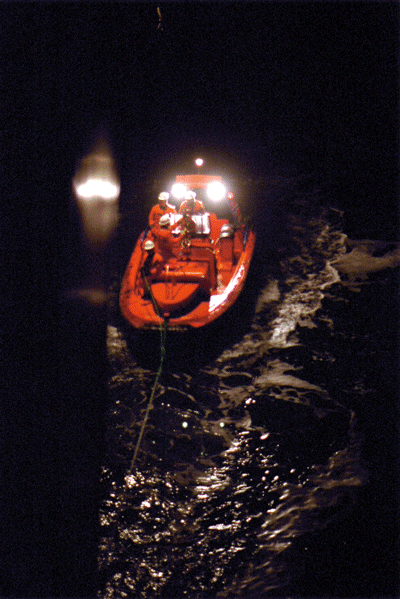
Figure 11.2 Lowering RIB and crew from the Coast Guard vessel KV Senja for a fisheries inspection.
Photo: Per Thrana.
Norway’s strategy has been to combine bilateral cooperation on resource control with 16 different fisheries nations with an active approach within the EU, UN, FAO and regional fisheries management organisations. The introduction of port state control measures, international guidelines for reducing discards of fish and the work on flag state responsibilities are important milestones in this context.
The indigenous dimension is also important in the fisheries sector. A government-appointed committee submitted a report1 on fishing rights off the coast of Finnmark on 18 February 2008. The Ministry of Fisheries and Coastal Affairs and the Sami Parliament (Sámediggi) have held consultations on how to follow up the committee’s recommendations. On 9 May 2011, they reached agreement on amendments to the Act relating to the right to participate in fishing and hunting, the Marine Resources Act and the Finnmark Act, and on measures to be implemented.
The Sami Parliament has agreed to these proposals with a proviso regarding interpretation of their legal basis. The next step will be for the Government to submit the matter to the Storting.
Textbox 11.1 The Joint Norwegian–Russian Fisheries Commission
The Joint Norwegian–Russian Fisheries Commission, which deals with fisheries management in the Barents Sea, is one of the most important focal points for institutional cooperation between Norway and Russia. The Barents Sea is one of the world’s most productive sea areas. The most important fish stock here, the Northeast Arctic cod, is much the largest of the 30 or so cod stocks in the North Atlantic. It is also one of the best managed. The status of the cod stock in the Barents Sea has varied, but it has never been anywhere near collapse, and is now at a historically high level.
The healthy state of the stock is due to a combination of favourable natural conditions, including the inflow of nutrients into the Barents Sea, and very successful and effective cooperation on management of the stock by the Joint Norwegian–Russian Fisheries Commission. A joint management strategy and cooperation on resource control, and in particular steps to combat IUU fishing, have been key factors.
Since the mid 1970s, Norway and Russia have practised joint management of the most important fish stocks in the Barents Sea: cod, haddock, capelin and Greenland halibut. The extension of fishery limits was a much-discussed topic in the context of the law of the sea for several years, and by the mid-1970s, the principle of 200-mile exclusive economic zones was emerging. The fisheries cooperation between Norway and Russia was formalised by the Agreement of 11 April 1975 on cooperation in the fisheries sector and the Agreement of 15 October 1976 on bilateral relations in the fisheries sector. These are reciprocal agreements that take a balanced approach to the management of joint fish stocks and the exchange of quotas for national stocks.
The Joint Norwegian–Russian Fisheries Commission was established under the 1975 agreement, and held its first meeting in January 1976. At its annual meetings, the parties determine total allowable catches (TACs) for each stock and share them between Norway, Russia and third countries. The proportions of the TACs allocated to each country have remained unchanged, and are an important reason for the stability of the cooperation. The parties also agree on reciprocal fishing rights in each other’s zones and exchange quotas for both joint stocks and national stocks.
The TACs determined by the Commission are based on management strategies agreed by Norway and Russia and on recommendations on catch levels from the International Council for the Exploration of the Sea (ICES). The Council includes both Norwegian and Russian scientists. This ensures that biological considerations are taken into account when the Norwegian–Russian quotas for the Barents Sea are determined. The quotas are based on a precautionary approach, and the objective is to ensure a high long-term yield.
In the 1990s, the scope of the Commission’s work was extended to new areas. In 1992, Norway and Russia agreed to expand their cooperation on fisheries management and control, and in 1993 the Permanent Russian–Norwegian Committee on Fisheries Management and Control was established. Under this cooperation, a range of specific measures have been introduced to improve control of fisheries resources, including routines for closer cooperation between the two countries’ coast guard and inspection authorities, for example the exchange of information on catch and landing data and exchanges between inspectors on land and coast guard observers.
In addition, the parties agree on various technical measures on for instance mesh sizes, minimum sizes, the use of sorting grids in trawl fisheries and criteria for closing areas to fishing because the intermixture of undersized fish is too great. Considerable progress was made in harmonising regulatory measures for the fisheries on both sides of the border in 2010.
The parties also make decisions on the framework for research cooperation. Marine research cooperation between Norway and Russia goes all the way back to the early 1900s, and was formalised as early as the 1950s. The results of this research form the basis for the management decisions made each year by the Joint Norwegian–Russian Fisheries Commission, and are therefore of crucial importance for the management of the joint fish stocks in the Barents Sea.
11.2 Aquaculture in the High North
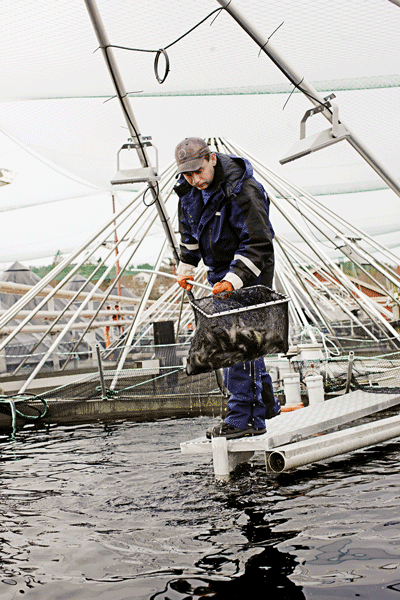
Figure 11.3 Aquaculture.
Photo: Salmar.
The Government’s objective is for Norway to be the world’s leading seafood nation. In 2010, the fishing and aquaculture industry exported seafood to a total value of NOK 53.8 billion. Aquaculture products accounted for 62 % of this figure. About one-third of aquaculture production in Norway takes place in North Norway, and production is rising. Nordland is, together with Hordaland in Western Norway, the country’s largest aquaculture county, and production in Troms has more than doubled since 2005.
Salmon and trout are the main aquaculture products in North Norway. In 2011, the Government decided to permit 5 % growth of salmon and trout production in Troms and Finnmark. The Government will facilitate further growth in the aquaculture industry within an environmentally sustainable framework.
Further growth will be based on the Government’s strategy for an environmentally sustainable aquaculture industry. An important element of this strategy is to ensure that the industry makes more effective use of the areas set aside for aquaculture. With this in view, the Ministry of Fisheries and Coastal Affairs appointed a committee to examine how the use of areas where aquaculture is permitted can be optimised. The committee’s proposals have been circulated for comment, and are now being considered by the Ministry. The purpose is to ensure environmental sustainability while facilitating further growth in production. The availability of suitable localities for fish farming and a generally satisfactory environmental situation in North Norway provide a good starting point for further development of fish farming in the region.
Value creation in the industry can be increased not only by boosting production, but also by increasing efficiency and enhancing the sales value of the fish produced. In spring 2011, the Ministry of Fisheries and Coastal Affairs commissioned a study of the potential for further commercial development of the salmon and trout farming industry. This showed that there is considerable potential for increasing value creation, for example through processing, by making better use of byproducts, and by improving operating efficiency. At present, only about 20 % of the salmon produced in Norway is processed before export. Processing provides local jobs, which is important for employment along the coast. Increasing local value creation will also enhance the standing of aquaculture production.
Farming of marine species
Farming of species other than salmon and trout may become important in the future, particularly in North Norway. So far, cod has been given priority. Cod thrive in the cold waters of the region, where conditions are more suitable than further south. A combination of private business interests and public-sector knowledge development has resulted in progress, but there are still both commercial issues, such as production costs, and environmental issues, such as escapes, that need to be resolved. If escaped fish survive to sexual maturity and breed with wild fish, characteristic traits of the wild fish could be lost. To prevent escaped farmed cod from affecting the genetic make-up of wild cod, releases of eggs and larvae from any future cod farming should be avoided.
The cod breeding programme run by Nofima in Tromsø has an important role to play in solving the challenges related to cod farming and ensuring that cod can be farmed profitably. In addition, an aquaculture research station, a fish health laboratory, and a national centre for capture-based aquaculture have been established in the Tromsø area.
11.3 Marine bioprospecting
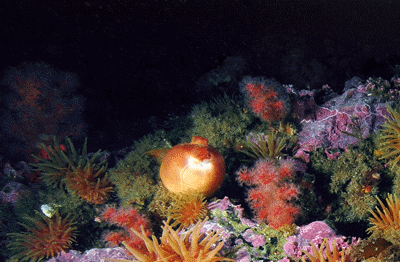
Figure 11.4 Rich marine life on the seabed of Isfjorden, Spitsbergen.
Photo: S. R. Birkely, Marbank.
There are probably more than 10 000 species about which we know little, according to Norway’s 2009 strategy for marine bioprospecting. These include species that live in cold Arctic waters where salinity, light conditions and nutrient availability vary. There are also species that live in oil reservoirs under high pressure and at high temperatures, and species that are adapted to difficult conditions in coastal waters or where there are high levels of pollution. This wide variety of species indicates that there are prospects of finding marine organisms with unique biochemical traits and that contain substances that can be used for a wide range of different purposes.
The Government considers that Norway’s long coastline and extensive sea areas offer rich opportunities in terms of access to resources and high species diversity. Norway already has the infrastructure and research groups needed to collect and screen a wide variety of marine organisms. In combination with the national expertise that has already been built up in the marine sector and biotechnology, this gives Norway a good starting point for a national initiative for marine bioprospecting. The High North is important in this context because it is home to potentially interesting Arctic marine organisms, marine industries are already established in the region, and research expertise and infrastructure is available. Because of the potential for knowledge development and value creation, marine bioprospecting is an important element of the Government’s High North strategy.
The Government has promoted marine bioprospecting in the High North, for example through its 2009 strategy for marine bioprospecting, which identifies gathering marine organisms from the northern sea areas and further development of infrastructure and research activities as priority areas. The Government allocated NOK 59 million2 in 2010 and NOK 54 million3 in 2011 to activities in this field. The Government’s goal is for marine bioprospecting to result in new, sustainable value creation, and with this in view, it will focus on relevant research and commercialisation of products derived from marine bioprospecting. The position of Marbank (located in Tromsø) as the national marine biobank will be strengthened through enhanced cooperation and coordination between institutions responsible for different collections of marine organisms. This will take place within the existing budgetary framework. Innovation Norway, the Research Council of Norway and SIVA (the Industrial Development Corporation of Norway) have drawn up a joint integrated action plan for implementation of the Government’s strategy for marine bioprospecting.
Textbox 11.2 Marine bioprospecting
Marine bioprospecting can be described as a systematic and targeted search for components, bioactive compounds and genetic material in marine organisms. This includes all types of marine organisms – micro-organisms such as bacteria, fungi and viruses, and larger organisms such as algae, shellfish and fish. Marine organisms are found in the open sea, coastal waters, fjords, the seabed and oil reservoirs beneath the seabed. Marine bioprospecting is a process that can lead to industrial production of a variety of compounds that can be used in many different sectors.
The use of algae as raw materials and as biomass for energy production is an area that offers exciting opportunities for future development, and that will benefit from the new knowledge that will be developed through the Government’s marine bioprospecting initiative. Algae grow fast and do not need extra nutrients beyond the supplies brought with ocean currents. The Research Council of Norway is supporting projects on the use of algae as feedstuff and the establishment of industrial-scale farming and harvesting of algae along the Norwegian coast for bioenergy and fish feed. It will take time before algae can be profitably grown for these purposes. The coastline from Sør-Trøndelag and northwards has suitable areas for farming algae.
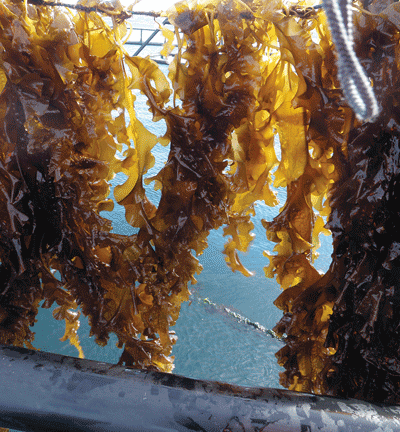
Figure 11.5 Kelp farming.
Photo: Silje Forbord, SINTEF Fisheries and Aquaculture.
Genetic material obtained from the natural environment is a common resource belonging to Norwegian society as a whole and managed by the state. Access and benefit-sharing are important for conservation and sustainable use of biological diversity. Norway has signed the Nagoya Protocol on access to genetic resources and the fair and equitable sharing of benefits arising from their utilisation under the Convention on Biological Diversity. The protocol will enter into force 90 days after it has been ratified by 50 states. As part of the process towards Norway’s ratification of the protocol and of following up the national strategy for marine bioprospecting, the Ministry of the Environment and the Ministry of Fisheries and Coastal Affairs are drafting regulations governing the collection and utilisation of genetic material under the Nature Diversity Act and the Marine Resources Act.
12 Oil and gas activities
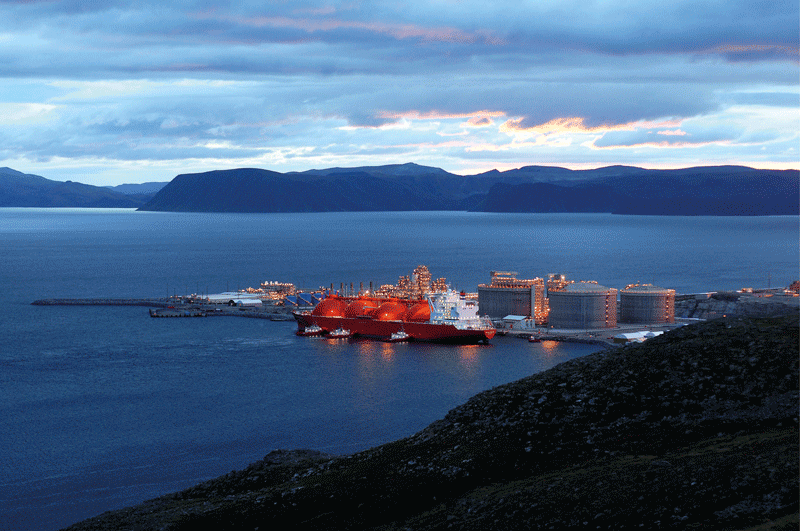
Figure 12.1 The Arctic Princess docks at Melkøya.
Photo: Statoil
The continental shelves in the Arctic are believed to be the world’s largest unexplored areas with significant petroleum potential. There is considerable uncertainty surrounding resource estimates for these areas. In 2008, the US Geological Survey estimated that about 22 % of the world’s undiscovered, technically recoverable oil and gas resources can be found in the Arctic, or more specifically 13 % of the world’s undiscovered oil and 30 % of its undiscovered natural gas (see Figure 12.2). It is thought that the undiscovered gas resources in the High North for the most part belong to Russia. Most of the exploration and production activities in the High North are currently taking place onshore, primarily in Russia, Alaska (the US) and Canada, despite the fact that the majority of the resources (84 % according to the US Geological Survey) are thought to be located offshore. Since 2002, Greenland has awarded licences for exploration and test drilling west and south of its land area.
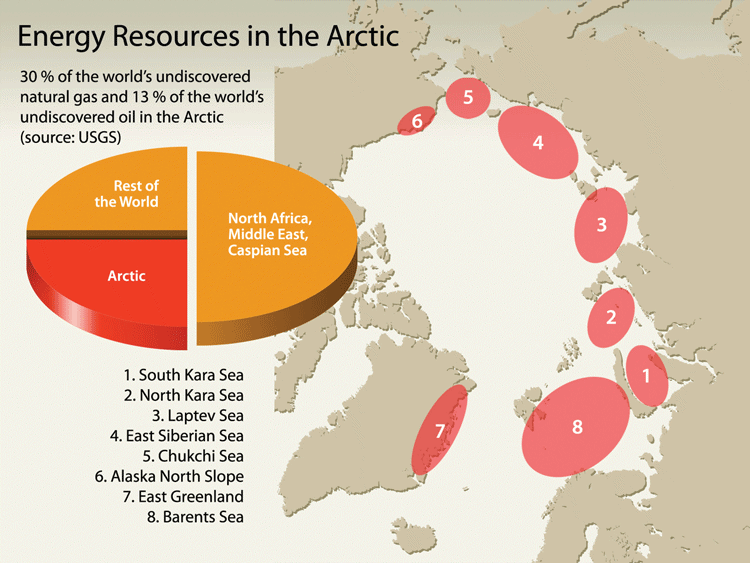
Figure 12.2 Estimated undiscovered oil and gas resources in the Arctic.
Source United States Geological Survey
Because of the expertise they have gained from working under demanding conditions on the Norwegian continental shelf, Norwegian companies are sought-after as partners for developing the oil and gas resources in the High North. The Norwegian petroleum and supplier industries have 40 years’ experience of exploration and production, and they have built up considerable expertise, developed advanced technology and established high standards for health, safety and the environment.
The white paper An industry for the future – Norway’s petroleum activities (Meld. St. 28 (2010–2011)) describes the Government’s petroleum policy and gives a broad overview of Norway’s petroleum activities and the opportunities that exist in the High North. The Government will facilitate the further development of Norway’s petroleum activities in the Barents Sea, and will seek to ensure that these activities have spin-off effects on value creation at the local and regional levels. It is crucial to provide a good basis for sound resource management and sustainable development in this region. This includes maintaining high health, safety and environment standards, making sure that Norway is at the forefront in research and development and offshore technology solutions, and ensuring that we have well-developed and reliable search and rescue and oil pollution emergency preparedness and response systems. The integrated management plans for Norwegian sea areas also establish the framework for petroleum activities in these areas. The purpose of the management plans is to provide a framework for the sustainable use of natural resources and goods derived from the area, while at the same time maintaining the structure, functioning and productivity of the ecosystems in the sea areas concerned. Integrated management plans are thus a tool both for facilitating value creation and for maintaining the quality of the environment in sea areas.4 Although the management of Norwegian petroleum resources is a matter of national concern, we also cooperate with other Arctic countries, for example in the Arctic Council, with a view to developing guidelines for oil and gas activities in the Arctic.
Cooperation with Russia will be particularly important in the time ahead. Under the treaty between Norway and Russia on maritime delimitation in the Barents Sea and the Arctic Ocean (see Chapter 5.3), the part of the previously disputed area that lies to the west of the delimitation line covers around 87 000 km2. The treaty takes a modern approach, with detailed rules and procedures to ensure the efficient and responsible management of any hydrocarbon deposits that extend across the delimitation line (unitisation rules). The treaty entered into force on 7 July 2011, and the Government will now initiate an impact assessment under the Petroleum Act, with a view to granting production licences for the previously disputed area west of the delimitation line in the southern part of the Barents Sea (south of 74°30’ N). If justified by the conclusions of the impact assessment, the Government will present a white paper recommending that this area should be opened up for petroleum activity. As part of this process, geological surveying and mapping of the seabed has begun in the area. The Norwegian Petroleum Directorate started seismic surveying on 8 July 2011, the day after the treaty on maritime delimitation entered into force. This will be the first systematic survey of the petroleum resources in this area.
The project on harmonisation of health, safety and environment standards for petroleum activities in the Barents Sea, which is part of the Barents 2020 programme, is an important part of our cooperation with Russia. See Box 12.1 for more details.
Textbox 12.1 Barents 2020: Harmonisation of health, safety and environment standards for petroleum activities in the Barents Sea
The purpose of the project, which was initiated by the Ministry of Foreign Affairs and driven by the petroleum industry itself with DNV and Gazprom as project managers, was to assess and recommend harmonised industry standards for health, safety and environment for oil and gas activities in the Barents Sea, and associated maritime activities. The project has been divided into four phases, and was completed in December 2011. It is a good example of cooperation between Norwegian and Russian industry actors in the petroleum sector in the High North. Phase 1 of the project focused on securing the involvement of Norwegian and Russian actors, and establishing a basis for discussions between the Norwegian and Russian actors. In phase 2, Norwegian and Russian actors from industry and the authorities worked together to draw up scenarios that formed the basis for work in phase 3. In addition, topics were identified for further study in phase 3, in expert working groups. Phase 3 focused on the work of the seven working groups, and led to a final report that assessed 130 recognised international, regional and national industry standards that will be used as a basis in future operations. Phase 4 has focused on developing additional requirements in areas that are currently not adequately covered by existing industry standards, for use on the Norwegian and Russian continental shelves in the Barents Sea.
Under the Barents 2020 programme, the Ministry of Foreign Affairs will support a follow-up project led by DNV with the aim of transferring experience from the cooperation between Norway and Russia to other Arctic countries where there are oil and gas activities.
The Government has also been involved in establishing a consortium of Norwegian and Russian institutions that are interested in cooperating on education, research and business activities in the energy sector. The Norwegian and Russian Education and Research Consortium for International Business Development in the Energy Sector (NAREC) was founded in 2010, and participants include a number of Norwegian and Russian institutions. The consortium is headed by the High North Center at the Bodø Graduate School of Business, University of Nordland in Norway and the MIEP Institute at MGIMO University, Moscow, in Russia.
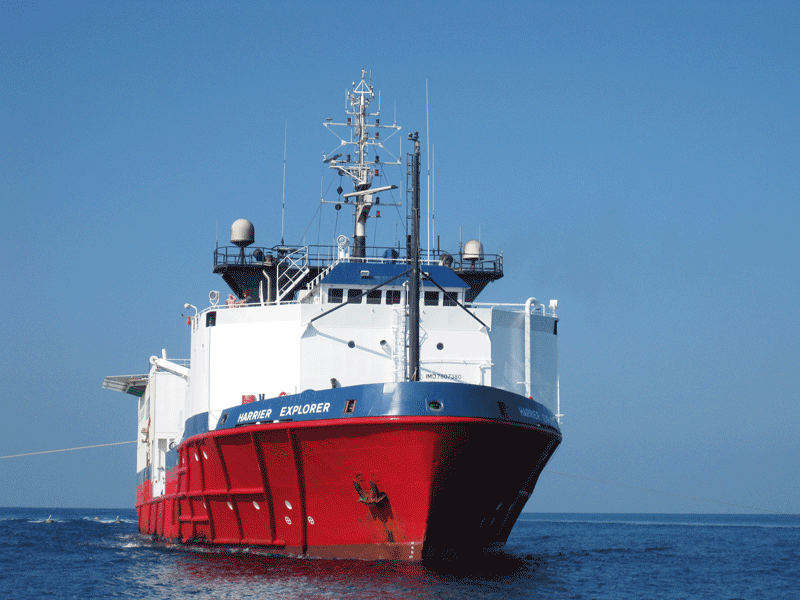
Figure 12.3 The seismic vessel Harrier Explorer.
Photo: Petroleum Geo-Services
There is considerable potential for making new discoveries in the High North, but there are many geological unknowns. If exploration is to be made more effective, it is important to have better geological models and improved understanding of the geology of the region.
Research focusing on Arctic issues is one of the areas funded by the Research Council of Norway’s petroleum research programmes. These research programmes also seek to increase the involvement of North Norway’s business sector in research and innovation projects. In the Optimal Management of Petroleum Resources (PETROMAKS) programme, the number of projects including actors from North Norway increased significantly in 2010.
The Government would like to see profitable activities offshore that also create positive spin-off effects on the mainland, and will work towards this. The Government attaches importance to shaping policy in a way that makes the High North attractive to companies, so that they give the region priority in their portfolios. During the 21st licensing round, companies showed great interest in carrying out exploration activities in the southern Barents Sea.
Oil and gas activities are already creating positive spin-off effects. If these effects are to become more widespread, more discoveries that will be profitable to develop are needed. This will make it possible for the petroleum industry to expand in North Norway. More exploration and the opening up of new areas will be essential for achieving the desired results. The Storting has therefore decided to initiate opening of the waters around Jan Mayen and the part of the previously disputed area to the west of the delimitation line in the southern part of the Barents Sea (south of 74°30’ N). New jobs can be created if North Norway has a long-term petroleum industry. If more supplier companies are established in the region, this will help to increase expertise and build professional networks. It is crucial that businesses in North Norway are able to compete on an equal footing with other potential suppliers to the petroleum industry. An active dialogue and close interaction between the authorities at local, regional and national levels are important for achieving this. With the development of the Snøhvit and Goliat fields, Hammerfest has become a centre for petroleum activities in the High North, and it is a good example of the major spin-off benefits that can be created.
In the spring of 2011, Statoil made a significant oil discovery on the Skrugard prospect in the Barents Sea. This is a breakthrough discovery in this part of the Barents Sea, and it could provide the basis for a new, independent development. In August 2011, a gas discovery was made on the Norvarg prospect, for which Total E&P Norge is the operator. These discoveries will give rise to new opportunities for activities in the Barents Sea in the time ahead, and for further strengthening the petroleum industry in the High North. Local and regional assignments for the petroleum industry create spin-off effects onshore, as we have seen in connection with the development and operation of fields in other parts of Norway.
Petroleum activities off the Helgeland region of Nordland county (the Norne and Skarv/Idun fields) are creating spin-off effects in the municipalities of the region. In 2007, the supply base Helgelandsbase in Sandnessjøen bought goods and services totalling NOK 280 million from companies in Nordland. The companies, the municipalities and Nordland County Council are cooperating to ensure that the petroleum activities that are starting up result in the establishment of local jobs and businesses.
Not only are the petroleum activities creating significant spin-off effects in the form of increased employment, they are also creating a broader industrial base and more jobs that require special expertise. In Hammerfest, the development of the Snøhvit field has helped to reverse a negative demographic and employment trend.
The consultancy firm Asplan Viak and the Nordland Research Institute made a study of regional spin-off effects in connection with the updating of the integrated management plan for the Barents Sea–Lofoten area,5 which gives an indication of the potential for positive spin-off effects – such as value creation, jobs and improved welfare – from the development of new petroleum fields. It shows that development of oil and gas fields can create between 4 000 and 6 000 new jobs in North Norway over a period of 30 years. This is based on a conservative estimate of the resources in the area. The resource scenario does not include potential resources in the previously disputed area west of the delimitation line, which would be additional to those included in the analysis.
Textbox 12.2 Snøhvit
The development of the Snøhvit field in 2002 was a milestone in developing the Barents Sea as a petroleum province. It is the first offshore gas development in the Barents Sea and Norway’s first liquefied natural gas (LNG) facility. Up to 2 500 people were employed in the construction phase, until the field came on stream in 2007. Operation, maintenance, modification and support services for Snøhvit have created 400 jobs, and three quarters of the employees have been recruited from North Norway. Nearly NOK 3 billion of the overall deliveries to the field come from companies registered in North Norway.
Impact assessments show that Snøhvit has reversed the negative population and employment trends in Hammerfest. New companies are being established, and there is now a shortage of manpower in the region. Housing construction is expanding considerably, and a substantial increase in municipal revenues is expected. Substantial investments have been made in upgrading school buildings and infrastructure and in developing cultural facilities. The higher level of competence in the region resulting from the Snøhvit development has also benefited other industries.
As indicated in the white paper on Norway’s petroleum activities, the Government will facilitate increased industrial use of gas in Norway, provided that this is commercially viable and the resource base is sufficient. The alternative value of the gas is its market price. Industrial use of gas in Norway must therefore be profitable, with market-based gas purchase agreements. The Government’s point of departure is that the industry should be developed in an environmentally sound way and within the framework of Norwegian climate policy. Development of infrastructure may be necessary in order to increase industrial use of gas in Norway. Any such projects must be market-based and driven by commercial interests. As mentioned in the white paper on Norway’s petroleum activities, Gassco is conducting a study of development scenarios for gas infrastructure in the High North, including opportunities for industrial use of gas.
With rising oil and gas production and mineral extraction and an increasingly central position because of new transport routes, it may become more attractive to locate additional industry in the High North.
The Government will take steps to ensure that new discoveries result in maximum value creation for society and promote local and regional spin-off effects. The scale of the increase in industrial activity will depend on commercial conditions and Norway’s international climate commitments.
13 Business development and value creation
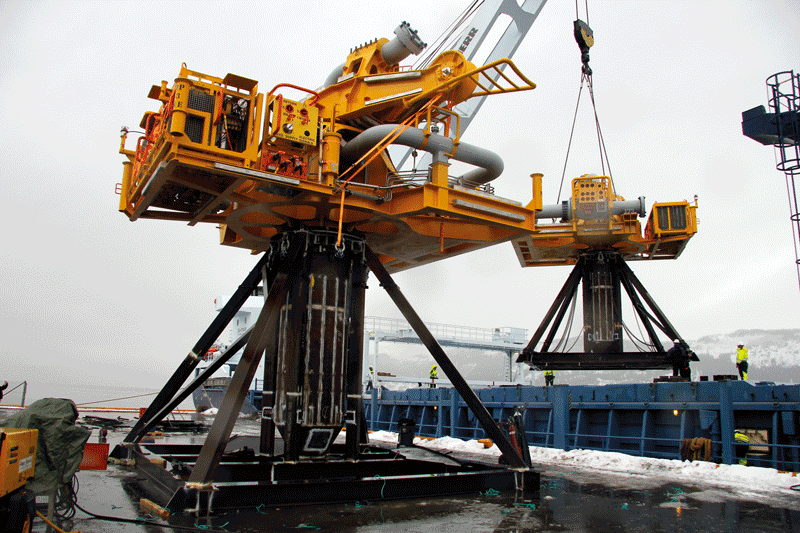
Figure 13.1 Two offshore loading systems being transferred for use at the Hibernia field off the east coast of Canada. The systems were produced by the Miras Group, North Norway’s largest engineering concern, whose production facilities are located in Mo Industrial Park in Nordland.
Photo: MIP Info.
13.1 Knowledge and innovation as a basis for business development
New knowledge and innovation are needed to achieve maximum value creation on the basis of the natural advantages that exist in the High North. According to calculations by the Ministry of Local Government and Regional Development,6 economic growth is weaker in North Norway than in the rest of the country (value added rose by 40 % and 70 % respectively in the period 1997–2007). Similarly, productivity and productivity growth are significantly lower in North Norway than in the rest of Norway. However, many large corporations have their head offices outside North Norway and growth in value creation from these companies’ activities in North Norway is recorded in the area where their head office is located, not in the statistics for North Norway.
Promoting innovation is an important task across the whole country, including in North Norway. The publication Konjunkturbarometeret for Nord-Norge (“Business Trends Barometer for North Norway”, Norwegian only), which is issued twice a year, presents current figures and projections for the future. The autumn 2011 issue reported increasing business activity in the region, including the petroleum industry, exports from North Norway and tourism. Exports from North Norway were 38 % higher in the period January–August 2011 than in the same period in 2010. Fish and fish products account for approximately one third of all exports from North Norway and are particularly important for Troms and Finnmark. Other key exports from Finnmark include LNG (liquefied natural gas) from the Snøhvit field and iron ore exported by Sydvaranger Gruve. Nordland is the dominant industrial county in North Norway7; there is significant activity in the petroleum industry, in particular the development of the Skarv field, in aquaculture and in the mineral industry, where China is a major customer.
According to the autumn 2011 issue of the business trends barometer, uncertainty in the global economy has so far had little impact on the North Norwegian economy and there is optimism that activity in a number of sectors, including the petroleum industry, the metal industry, the marine sector, tourism and the construction industry, will increase. However, a shortage of both skilled and unskilled labour remains a problem in many areas of North Norway. The need for labour is increasingly met by immigrants and migrant workers, who make up 14 % and 4 % of the workforce respectively, as opposed to 12 % and 3 % in the country as a whole.
Natural resource-based industries and tourism play a particularly important role in North Norway, and the public sector is larger than in the rest of the country. Oil and gas extraction and mining, both onshore and offshore, are areas that are gaining significance as are energy, the maritime industry and new forms of economic activity based on marine and land-based resources. We are dependent on knowledge, technology, capacity and expertise to maintain and further develop business activity in the north.
A shortage of capital is one of the factors making it harder for start-up companies to establish themselves in North Norway. In a white paper on state ownership (Meld. St. 13 (2010–2011), the Government announced that it would put forward a proposal on the establishment of a number of new country-wide seed money funds, and that it would submit a separate proposal to the Storting as to how the funds should be organised. One of these funds will be established in North Norway.
Norway has a highly educated population and the most highly educated workers are relatively less expensive to employ than in other countries. This gives us a competitive advantage when it comes to knowledge-intensive industries. It also means that it is likely and desirable that growth in the Norwegian business sector will take place primarily in industries that require a highly educated workforce. By ensuring a higher level of education, Norway will gain a more productive labour force and greater potential to stimulate innovation.
In the Government’s view, steps need to be taken to develop a more knowledge-based business sector in the High North. It is vital that companies from other parts of the country, as well as foreign companies, play a central role in this. Relevant research will also be crucial for developing knowledge-intensive business activity. This is clearly set out in the Research Council of Norway’s revised Research Strategy for the Arctic and Northern Areas (June 2011). The Government’s High North Committee has recommended that knowledge-based business development be given top priority in research on the High North.
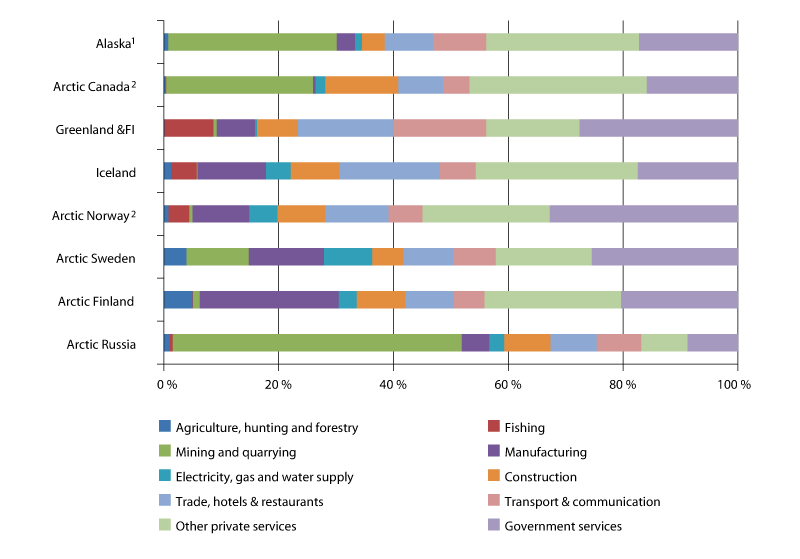
Figure 13.2 Industrial structure in Arctic regions.
1 For Alaska, fisheries are included under agriculture, hunting and forestry.
2 The bars for Canada and Norway are based on figures from 2007.
A shortage of qualified and unqualified labour is currently hampering the development of many communities in North Norway. Lack of manpower is a greater problem in North Norway than elsewhere in the country, in part due to the industrial and population structure of the region. As set out in Official Norwegian Report 2011:3 (Norwegian only) on knowledge-based jobs and economic growth, it makes economic sense to ensure that the growth in the number of knowledge-based jobs is spread across the entire country. A broad-based effort in several policy areas is needed in order to increase the number of knowledge-based workplaces. Regionally based educational institutions, themselves knowledge-based workplaces requiring highly educated staff, have a key role to play in the region in terms of generating knowledge and supplying qualified personnel to the public and private sector.
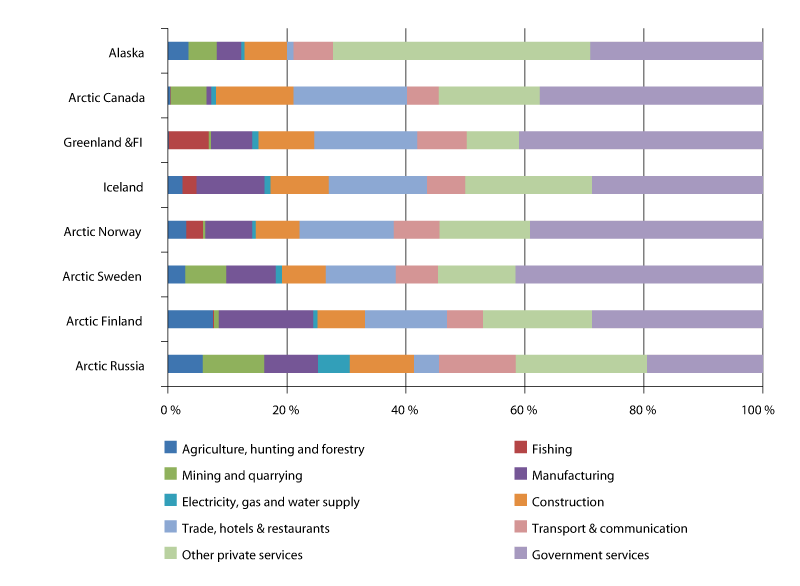
Figure 13.3 Percentage of total employment by industry for various Arctic regions, 2008.
Figure 13.31 shows the percentage of total value added by industry in various Arctic regions in 20082. The percentage for mining – including oil and gas production – is highest in northern Russia, where it accounts for over half of total value added. In Alaska and Arctic Canada mining accounts for 29 % and 25 %, respectively, of value added. Public services (including the public administration and public health, education and social services) are particularly important in North Norway, where they account for about one third of total value added. In northern Russia the figure for public services is only 9 %. However, the armed forces are not included in the regional economic accounts for Russia. By comparison, in Alaska the armed forces account for some 23 % of total value added generated by the public services.
1 Source: Professor Ilmo Mäenpää, University of Oulu.
2 The division into regions in this table is the same as that used in the report The Economy of the North, which was drawn up by Solveig Glomsrød and Iulie Aslaksen, both researchers in Statistics Norway, in 2008. The only region of the US included in the table is Alaska. Canada: the Yukon Territory and the Northwest Territories, Nunavut. Denmark: Greenland and the Faroe Islands. Norway: Finnmark, Troms and Nordland. Sweden: Norrbotten and Västerbotten. Finland: Lapland, the Oulu region and Kainuu. Russia: Murmansk, Karelia, Arkhangelsk, Komi, Yamal-Nenets, Khanty-Mansia, Taimyr, Evenk, Sakha, Koryak, Magadan and Chukchi. The whole of Iceland is included.
In order to meet the region’s need for expertise, it is important to be able to provide relevant education and training to the sparse population in North Norway. Providing flexible educational opportunities requires academic and technological cooperation between educational institutions in North Norway and elsewhere in the country.
The universities and university colleges in North Norway are the main hubs of the region’s knowledge infrastructure. In the Government’s view it is important that research and educational institutions both in the High North and elsewhere in the country cooperate with existing and new private sector actors in the High North. One of the objectives of the Research Initiative for Northern Norway (NORDSATSING), which was established in 2009 with funding provided by the Ministry of Local Government and Regional Development, is to strengthen the links between the private sector and the knowledge sector in North Norway. In the white paper Education Strategy (Report No. 44 (2008–2009) to the Storting), the Government proposed that each institution should establish a council for cooperation with the social partners, including representatives of the social partners and students. The purpose of the councils is to strengthen strategic cooperation between the sectors. According to the proposal, the councils will draw up a strategy to ensure lasting dialogue with the social partners on the development of degree programmes and further and continuing education.
The high drop-out rate from upper secondary schools in North Norway also poses considerable challenges and is a general impediment to business development. The Government has launched a three-year project aimed at establishing lasting cooperation between the central and local authorities in order to improve pupils’ chances of successfully completing upper secondary education.
There is also a pressing need for closer cooperation between the educational institutions and the private sector in the areas of work experience placements and teaching in primary and secondary schools. Better integration of immigrants in local communities, an effective housing policy and the approval of existing educational programmes for immigrants are other important measures for increasing the availability of skilled labour in North Norway.
13.2 Infrastructure for transport and electronic communications
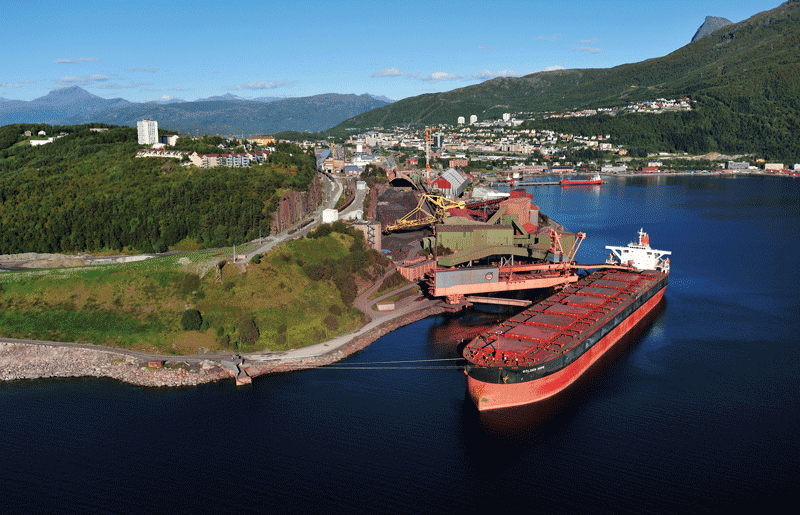
Figure 13.4 Iron ore being transferred from train to ship in Narvik.
Photo: Port of Narvik
In the Government’s view, increased investment in infrastructure is essential for strengthening Norway’s long-term ability to create value. The National Transport Plan 2010–2019 includes a number of projects of major strategic importance for the development of the High North. These projects will be followed up in connection with the annual budgets.
In the past, there has been a considerably lower level of ambition and a lack of ability to follow up the financial framework in the transport plan in annual budget proposals. This situation has changed considerably since 2005. The financial framework set out in the National Transport Plan 2010–2019 is NOK 100 billion higher than in the previous transport plan. This will be crucial for the development of the road network in North Norway. The framework for state investment in new trunk road projects in North Norway is approximately 300 % higher in the 2010–2019 plan than in the 2006–2015 plan. The total amount of funding allocated for the operation and maintenance of trunk and county roads in Nordland, Troms and Finnmark has risen by 33 %, from NOK 1.2 billion in 2007 to NOK 1.6 billion in 2010. The increase in funding will also allow the implementation of a series of measures to improve fairways in Nordland, Troms and Finnmark, which will enhance the safety and efficiency of maritime transport in the High North.
It is also important to develop attractive labour market regions in the High North. The Government is giving priority to upgrading the E6 trunk road, which links the different parts of Norway together, all the way from Kirkenes in the far north to Svinesund on the Swedish border in the south. Many of the projects will be implemented in North Norway. The National Transport Plan 2010–2019 also gives priority to strengthening important road connections with Sweden, Finland and Russia.
The establishment of new infrastructure in vulnerable areas may cause major disturbance to the natural environment and lead to a rise in pollution levels. The Government attaches great importance to limiting the negative environmental impacts of infrastructure development by incorporating this into the planning process and ensuring that projects are carried out in accordance with the national targets set out in Norway’s climate and environmental policy.
The Government also announced a review of transport infrastructure in the High North in the National Transport Plan 2010–2019. As a follow-up to this, the transport authorities and Avinor AS were commissioned by the Ministry of Transport and Communications and the Ministry of Fisheries and Coastal Affairs to prepare a strategic report on transport infrastructure needs in the High North. The aim was to generate a better knowledge base for use in future decision-making on infrastructure development in the region. The report was submitted to the Ministry of Transport and Communications and the Ministry of Fisheries and Coastal Affairs on 22 June 2011. It is one of a number of background reports that will serve as input to the new national transport plan for 2014–2023. The new plan is to be submitted to the Storting in spring 2013, and will include an overall review of the aims and strategy of the Government’s transport policy.
Long distances between communities and economic centres in North Norway mean that air services and airports are crucial for the population and for business. A number of local initiatives for the construction of new airports or extension of existing runways are underway throughout Norway. Several of these projects are located in North Norway. The transport authorities and Avinor are to carry out an analysis of local initiatives related to the airport structure. Their report will form part of the basis for the new national transport plan for 2014–2023.
The Government’s aim is to establish transport infrastructure between Norway and neighbouring countries so as to link different parts of the Barents region more closely together. The Northern Dimension Partnership on Transport and Logistics will provide an arena for furthering efforts in this area. The purpose of the partnership is to identify and implement effective projects that can improve cross-border infrastructure in the region. The Government will cooperate with neighbouring countries to attract co-funding from the EU for projects related to cross-border transport.
New projects on the extraction of ores and mineral resources in northern parts of Sweden and Finland and the potential for developing such resources in North Norway may heighten the need to expand infrastructure capacity. The Government will play an active role in developing the necessary knowledge base and promoting contacts between political and business groups with interests in the region in order to provide a basis for assessing needs and opportunities. Concrete transport solutions that can meet the future needs of the mineral industry should be assessed more closely, in cooperation with Sweden and Finland.
One valid option is to increase the number of shipments moving through Norwegian ports via the railways. This could be an attractive alternative as Norway has ice-free ports and can accommodate the largest ships. An increase in maritime traffic in the High North could create a need for improvements to the fairways and for further measures to monitor maritime traffic. It may also mean that some ports would need to be deepened. The Government will consider these issues further in connection with the preparation of the new national transport plan for 2014–2023. The Government will also promote the development of the ports into hubs that can enhance business development in the region. A project to establish good connections between the ports and the rest of the transport network would be relevant in this context.
Industry must be prepared to make a financial contribution to the development and operational costs of any projects to increase the capacity of the railway infrastructure, which are primarily driven by the need for industrial transport solutions.
The market for electronic communication has been liberalised, and service providers develop services on the basis of demand and capacity needs. The three counties of North Norway have played a significant role in ensuring the expansion of a high-capacity network over large areas. Finnmark county, for example, is in the process of having a fibre optic cable installed between eastern Finnmark and Murmansk. Broadband, broadcasting, mobile telephony and mobile broadband are all dependent on a robust and adequate network for electronic communication. There are several connections between the networks of the neighbouring countries in the High North, not least to ensure adequate capacity and redundancy (backup connections) in case of network failure. The Government will continue its efforts to facilitate the provision of a broadband network with sufficient capacity to meet future needs in education, health, the business sector and households across the whole of Norway.
13.3 Electricity infrastructure and renewable energy
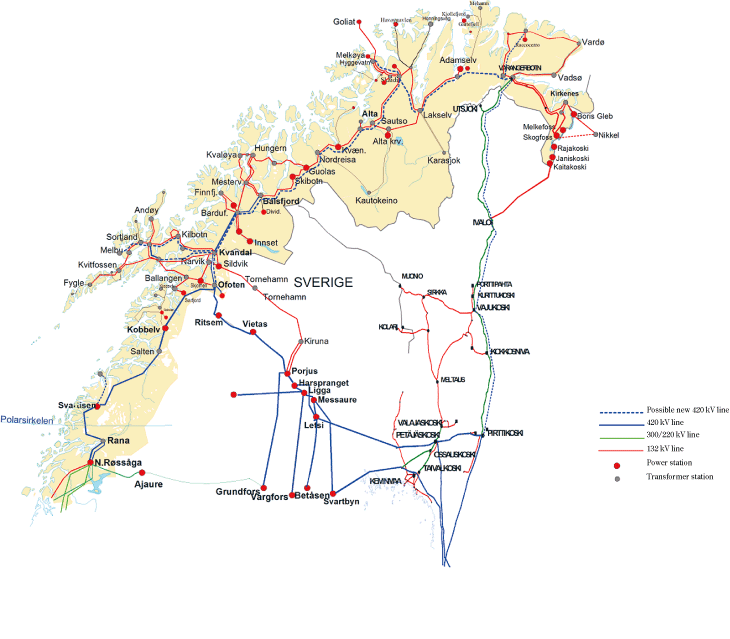
Figure 13.5 Electricity infrastructure in the northern parts of Norway, Finland and Sweden. Prepared by North Energy.
Sufficient electricity production and transmission capacity in North Norway are essential for industrial activity and business development in the region. The Government views it as very important to ensure that Norway has an efficient electricity grid throughout the country that facilitates industrial activity and business development. The Government also attaches great importance to close cooperation with neighbouring countries in the High North and with the other Nordic countries.
The development of electricity infrastructure has impacts on the natural environment and local communities. The advantages and disadvantages of new power lines are weighed up through licensing procedures and associated impact assessments and consultation processes.
Electricity production in North Norway is based primarily on hydropower. In a normal year the region currently generates a surplus of approximately 4.8 TWh, but variations in water inflow mean that there are wide fluctuations from year to year and between seasons. There are also large variations within the region. Whereas Nordland county has a surplus of electricity, Troms and Finnmark experience a deficit in the winter. It is therefore crucial to ensure that there is a reliable transmission grid in place.
Today, the electricity grid in large areas of Troms and Finnmark is aging and has a voltage of 132 kV. Security of supply is also weaker in Troms and Finnmark than in other parts of the country because large areas of these two counties are dependent on a single transmission line running from Ofoten to Hammerfest.
Statnett is planning to construct two new 420 kV transmission lines – from Ofoten to Balsfjord and from Balsfjord to Hammerfest, to be completed in 2014 and 2017 respectively. This will improve security of supply and expand capacity so that the transmission of renewable energy is also possible and consumption can be increased, for example in connection with increased activity in the petroleum and mining industries.
In addition to projects designed to increase the north-south transmission capacity of the Norwegian electricity grid, Statnett is also looking at ways of increasing transmission capacity between neighbouring countries in the High North. Norway is a part of the Nordic power supply system, and North Norway is more closely linked to Sweden than to southern Norway. There are also important connections to Finland and Russia from eastern Finnmark. Statnett is seeking closer cooperation on grid development in the High North, in particular through its “Arctic Circle” project. The company points out that as well as improving security of power supply in the northern parts of Finland, Norway and Sweden, cooperation in this area could promote the development of renewable energy sources, currently prevented by limited transmission capacity, and the establishment of new “green” business activity based on electrical power. Statnett has also initiated a project with the Finnish company Fingrid which will examine how the grid in the High North can be developed in the long term as part of the consideration of the proposed ring interconnector linking North Norway, northern Finland and northern Sweden, the “Arctic Circle”.
Cooperation between grid operators in the Nordic countries has traditionally been close, and this is being continued through the European Network of Transmission System Operators for Electricity (ENTSO-E). In addition, Statnett and the Swedish system operator Svenska Kraftnät (Swedish national grid) collaborate extensively on grid development. Continued close cooperation between the system operators in the Nordic countries is crucial for further development of the grid in North Norway.
Renewable energy
There is great potential in the High North for increasing renewable energy production. Prior notification and applications for hydropower projects in North Norway that could produce some 3 TWh per year are currently being considered by the energy authorities. The region has abundant wind resources and the energy authorities have received notification and applications for a large number of wind power projects. According to a feasibility study carried out by the Norwegian Water Resources and Energy Directorate and Enova SF in 2008, it would be technically possible to produce some 4 TWh of wind power in the period up to 2025, provided that grid capacity is increased as planned. The licence applications for hydropower and wind power projects will be assessed on the basis of scientific knowledge, and the advantages of each project will be weighed up against its potential negative impacts on the environment and other public interests.
The Government will work to unleash the potential of renewable energy through existing funding arrangements. Norway and Sweden have established a common market for green certificates, which is an important component of a targeted initiative to promote renewable energy production. The two countries aim to increase their renewable electricity production by a total of 26.4 TWh by 2020. The common market for green certificates is technology-neutral. Producers of electricity based on renewable energy sources receive a green certificate for every MWh of electricity produced. Income from the sale of green certificates, in addition to income from the sale of electric power, will make it more profitable to build new facilities for the production of electricity from renewable energy sources. The common market is due to come into effect on 1 January 2012 and will remain in place until the end of 2035. A long-term partnership such as this provides a sound, stable framework for the industry. The scheme is regarded as an important tool for unleashing some of the huge potential for renewable energy production in the High North.
The common market for green certificates will replace the system of investment grants for wind power under Enova. Promoting a shift in energy production and use through Enova and the Energy Fund, will, however, continue to be a part of the Government’s renewable energy policy. In the future, Enova’s activities will focus on increasing the use of energy carriers other than oil, gas and electricity for heating, energy efficiency in industry and buildings and full-scale demonstrations of renewable energy technologies. This is in line with Enova’s primary objective of promoting a transition to greener energy production and use in Norway, and will also result in a more diversified energy supply and better security of supply.
13.4 New prospects for the maritime sector

Figure 13.6 New sea routes in the Arctic Ocean.
As a result of global climate change the ice-covered waters of the Arctic Ocean and adjoining seas will gradually become more accessible to international shipping. An increase in maritime activity is expected particularly in connection with offshore oil and gas activities, the transport of goods and equipment to and natural resources from the Arctic and a gradual rise in transit shipping.
In the Barents Sea, traffic consisting of large tankers and bulk carriers to and from Russian ports has risen from 200–240 ships with a cargo volume of 10–12 million tonnes per year during the period 2004–08 to over 300 ships with a cargo volume of 18 million tonnes in 2010.8 Increased production of petroleum and mineral resources in the Norwegian and Russian Arctic will lead to greater activity in the maritime sector.
There will, for example, be a need for transfers at sea of gas condensate and oil from smaller ice-class vessels to large tankers for transport to the market. Ship-to-ship transfers of Russian crude oil take place in winter in the Bøkfjorden at Kirkenes and in the Sarnesfjorden at Honningsvåg. In the Government’s view, strict regulation of cargo transfers is necessary to ensure a high standard of safety and to reduce the risk of environmental damage.
An increase in maritime activity will also open up opportunities for developing service and support functions at Norwegian ports. The Government welcomes the fact that onshore support functions for maritime and offshore activities are being moved northwards. The investment made by the Port of Tromsø to enable it to carry out major maintenance work on platforms operating in northern waters is an exciting example of strategic positioning. In line with measures set out in the report New Building Blocks in the North, the Ministry of Fisheries and Coastal Affairs, in cooperation with the Ministry of Petroleum and Energy, commissioned the Norwegian Coastal Administration to draw up a report assessing the possible alternative locations for a new oil terminal in eastern Finnmark. A new terminal of this kind could provide services to the oil and gas and maritime transport industries in the Barents Sea. The report, published by the Norwegian Coastal Administration in 2010, concluded that several of the ports in eastern Finnmark (Kirkenes, Vadsø, Vardø (Svartnes), Båtsfjord, Berlevåg and Kjøllefjord) could, with varying levels of investment in infrastructure, be considered as possible future oil terminals. However, Kirkenes is the only existing port that meets the requirements for major cargo handling and petroleum facilities. In order to strengthen the position of Kirkenes as a hub in eastern Finnmark the Government is giving priority to upgrading the E105 road towards Russia. In addition, new infrastructure projects at Kirkenes airport may also be considered in connection with the preparation of the national transport plan for 2014–23.
Interest in transit traffic through the Northeast Passage is growing. The sea journey from Yokohama to Hamburg is approximately 40 % shorter via the Northeast Passage than via the Suez Canal and bunker consumption roughly 20 % lower.9 There has been limited maritime traffic between Europe and Asia through the Northeast Passage since summer 2010. In the long term, the Northeast Passage may be a viable route for the international merchant fleet, particularly due to the continuing growth in demand for raw materials from the developed Asian countries. DNV10 estimates a trade potential for shipping in the Arctic of 1.4 million TEU11 in 2030, equivalent to 480 transit voyages across the Arctic. For 2050, the trade potential rises to 2.5 million TEU and the projected number of Arctic transit passages (one-way) to 850. However, these estimates depend on assumptions about several factors, such as global economic development, structural conditions in the global merchant shipping fleet and fuel prices. The Russian authorities are taking steps to facilitate regular traffic along the Northern Sea Route with a view to strengthening Russia’s leading position in maritime operations in the Arctic. Close cooperation has been established between key Russian actors, such as Rosatomflot, and Norwegian business interests. The Government welcomes the fact that Russia is strengthening infrastructure and search and rescue capacity that will help to make maritime activities in the area safer and more efficient.
The estimates vary and are uncertain, but there is little to indicate that regular shipping traffic across the central Arctic Ocean can be established for several decades. Despite the uncertainty, questions have been raised about what Svalbard’s role might be in a scenario involving increased international maritime traffic in and across the Arctic Ocean. It is important in this context to differentiate between regular shipping routes that could create a need for transhipment ports and other technical infrastructure, and a possible rise in other forms of maritime traffic, e.g. in the cruise sector.
There are a number of challenges associated with shipping activities in Arctic waters, for example relating to maritime safety, environmental considerations, greenhouse gas emissions, preparedness and response, monitoring and control. The costs of building ice-class vessels are high. The long polar night, the risk of ice formation on vessels, and high insurance premiums all push costs up. Also, it must be expected that traffic regularity and reliability will be lower in the Arctic than along other shipping routes. A comprehensive review of shipping in the Arctic, resulting in the Arctic Marine Shipping Assessment 2009 Report, has been carried out under the auspices of the Arctic Council. The report provides an analysis of expected developments and contains a large number of specific recommendations for strengthening maritime safety.
The International Maritime Organization (IMO) is currently developing a mandatory international code of safety for ships operating in polar waters (the Polar Code). This work is being led by the Norwegian Maritime Authority. The Government intends to play a leading role in the development of international rules and industry standards and in knowledge generation and knowledge-sharing efforts that help reduce the risks associated with shipping in the Arctic. High priority is being given to completion of the Polar Code, which will encompass both safety and environmental considerations.
The Government attaches importance to developing maritime research and shipping expertise in the High North. The aim is to equip the Norwegian maritime industry to exploit the opportunities and meet the challenges associated with Arctic oil, gas and marine resources and the opening of new transport routes for energy and shipping in the High North. Environmentally sound maritime operations under difficult conditions, particularly in the High North, is one of the priority research and innovation areas identified in the Government’s maritime strategy. This is also reflected in the priorities set for the allocation of funding for maritime research and innovation under the Research Council’s programme Maritime Activities and Offshore Operations (MAROFF) and schemes administered by Innovation Norway. Arctic transport and operations is one of the strategic focus areas of the maritime industry’s research and innovation strategy platform, Maritim 21.
In the Government’s view, there are particular benefits to be gained by developing new business activity in areas of industry and knowledge where Norway already enjoys a strong position. Norway has one of the most dynamic shipping and maritime sectors in the world and the Government considers it important that Norwegian actors are in a position to secure market shares in the High North. A strong maritime industry in this region will also demonstrate Norwegian knowledge and Norway’s presence in the area. The maritime industry is the fourth largest industry in North Norway. With its 9 000 person-years, the industry recorded a turnover of NOK 14 billion in 2008, corresponding to approximately 7 % of total value added in the region.12 The maritime sector in North Norway continues to be dominated by fishing vessel companies but recent years have seen the development of many small and medium-sized companies producing offshore equipment, often for use in the Arctic.13
In order to strengthen competence in the industry, several of the most influential maritime actors in the High North have come together to establish an Arctic maritime cluster. This is a meeting place where strategic partnerships can be developed in order to strengthen the maritime sector in the High North. In 2011, the Ministry of Foreign Affairs provided funding for a pilot project aimed at enabling the cluster to meet the criteria required to qualify as a candidate for Innovation Norway’s Arena programme.
Textbox 13.1 Barents 2020: Centre for High North Logistics
The Ministry of Foreign Affairs provided funding for the establishment of the Centre for High North Logistics (CHNL) under the Barents 2020 scheme. The aim of the centre is to develop practical knowledge and networks between the relevant authorities, businesses and research institutions in the fields of maritime logistics and shipping in the High North. A number of projects and activities have been initiated by the centre, including a comprehensive study entitled Shipping in Arctic Waters carried out by the research institute Ocean Futures. The report from the study is being developed into a dynamic, searchable database and knowledge hub on shipping in the Arctic. In April 2011, the centre established its Arctic Logistics Information Office in Kirkenes, in cooperation with the Barents Institute and the Norwegian Barents Secretariat.
13.5 Mineral extraction in the High North

Figure 13.7 Mineral deposits and transport logistics in the Barents region.
The Government plans to present a strategy for the mineral industry in the spring of 2012. The strategy will consider the framework conditions for the mineral industry and mineral policy from a national perspective.
The global demand for ores, metals and minerals is rising rapidly. The Government therefore intends to carry out a survey of Norway’s mineral resources in the High North. New mining operations could form the basis for business development and value creation. The Government will develop contacts with Finland and Sweden so that the region can be considered as a whole, for example as regards infrastructure and competence building. There is also potential for cooperation with Russia in the area of mineral extraction. The exploitation of ore and mineral resources in the High North will also be one of the topics addressed during Norway’s chairmanship of the Barents Euro-Arctic Council and its presidency of the Nordic Council of Ministers. The topic will also be reflected in the work of the Northern Dimension Partnership on Transport and Logistics.
Mining activities can be land-intensive and can have considerable environmental impacts related to environmental disturbance, waste management and pollution. The development of new mining operations and new infrastructure related to transport, energy and industry could affect important species and habitats and remaining areas without major infrastructure development.
The Norwegian authorities take these environmental challenges seriously and require the industry to meet strict requirements to safeguard the environment. The Mineral Resources Act, the Nature Diversity Act and the Pollution Control Act provide the framework for new mining activities, see also Chapter 8.3.
The Government welcomes the cooperation between mineral companies and indigenous peoples’ organisations on issues relating to the extraction of minerals.
Strong economic growth in the BRIC countries14, and particularly in China, is an important driving force behind the increased demand for minerals. China is the destination for close to two-thirds of the world’s total exports of iron ore and accounts for 60 % of global pig iron production. Chinese consumption and demand are therefore vital for the further development of this industry. Moreover, China accounts for approximately 40 % of the global demand for copper, aluminium, zinc and nickel (sources: US Geological Survey, UN Conference on Trade and Development, World Bureau of Metal Statistics).
Europe consumes 20 % of the world’s ores and minerals, but produces only 3–4 %.15 The Barents region is one of the very few areas in Europe where there is a potential for the discovery and development of new deposits.
The geological region known as the Fennoscandian or Baltic Shield, which consists of the northern parts of Norway, Sweden, Finland and western Russia, is home to rich deposits of iron ore, base metals (copper, zinc, lead, tin and aluminium), industrial minerals, precious metals and special metals including rare earths. In many parts of the Barents region transport represents a bottleneck in the efficient exploitation of the resources. The coast is an important advantage for the mining industry in Norway as it affords easy access to deep ice-free ports. Our geographical location means that Swedish and Finnish minerals can also be transported to markets via Norway. Narvik, with its rail connection to Kiruna, is an important transhipment port for iron ore from Sweden.
Rising activity in the mineral and mining industry makes it essential to have satisfactory transport solutions so that larger volumes can be transported to the markets. The Swedish mining company LKAB plans to increase its production of iron ore in Sweden substantially. Two other companies are also planning to extract ore in Sweden and transport it via the Ofoten iron ore railway line and the port of Narvik. The capacity of the Ofoten Line is under pressure and the volume of goods transported along this line is already higher than along any other stretch of railway in Norway. In addition, the port needs to be developed to take account of the increase in activity. Sweden is planning to build several new passing loops. If current transport forecasts prove accurate, there may be a need to construct a double-track line. In the short term, more passing opportunities must be provided. The Government is following developments and is engaged in dialogue with the Norwegian National Rail Administration and Port of Narvik. Other rail solutions may also be considered, depending on developments in production, market factors and political priorities in Finland and Sweden. An assessment of transport needs for the High North will be included in the next national transport plan, which will be submitted to the Storting in spring 2013. The Government considers it important to play a part in generating necessary knowledge, highlighting alternative options and bringing business and other relevant actors together to discuss the various alternatives.
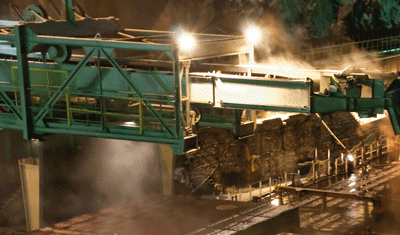
Figure 13.8 Mining iron ore, Sydvaranger Gruve AS.
Photo: Bente Geving
Innovation and research are crucial for parts of the mineral industry. A considerable ability to innovate is needed to be able to meet customers’ demands for tailor-made products. In order to strengthen Norwegian expertise in the mineral sector, the Government has provided funding for the establishment of a professorship in ore geology/mineral resources at the University of Tromsø.
Textbox 13.2 Barents 2020: Professorship in ore geology/mineral resources
Through the Barents 2020 scheme, the Ministry of Foreign Affairs has provided funding for the establishment of a professorship in ore geology/mineral resources at the University of Tromsø. A PhD position is also to be established.
Norwegian educational institutions are currently not producing specialists with sufficient expertise in the fields of bedrock and resource geology, with the result that the mining and prospecting industry lacks well qualified Norwegian candidates. The establishment of the professorship at the University of Tromsø will go some way to meeting the need to educate experts in the field. The aim is also to generate increased knowledge of mineral resources in Norway for the purpose of developing mineral-based industries within a sustainable framework. The new professorship will create a hub for expertise and teaching in ore geology/mineral resources that will also be of benefit to other educational and research institutions, the public administration and industry. Funding provided under the Barents 2020 scheme will also be used to promote the development of arenas for cooperation with Norwegian and international research groups working in fields related to the High North. The establishment of the professorship is therefore expected to lead to increased cooperation with Nordic and Russian research groups.
To date, there has been no comprehensive survey of the seabed to identify mineral resources that could be extracted in the future. In order to facilitate mineral extraction from the seabed, the Government will consider whether there is a need to update the legislation in this area, in connection with the preparation of the strategy for the mineral industry.
The Government is seeking to strengthen Nordic cooperation in the mineral sector. It has provided funding for a pilot project on the establishment of a Nordic knowledge centre for the mineral sector, in cooperation with the SINTEF Group and other Norwegian and Nordic knowledge institutions. The project is a follow-up to the recommendations set out in a review of industrial value creation based on geological resources in the High North (GeoNor), which was drawn up under the auspices of the SINTEF Group and the Northern Research Institute (Norut), and was partly funded through the Barents 2020 scheme.
Textbox 13.3 Barents 2020: The GeoNor report and a new Nordic knowledge centre for the mineral sector
The review of industrial value creation based on geological resources in the High North (GeoNor) was a joint project involving the participation of researchers from the Northern Research Institute (Norut) in Narvik and Alta, SINTEF Group (Tromsø), the Geological Survey of Norway (NGU), the Norwegian University of Science and Technology (NTNU) and the SINTEF Group (Trondheim). The project was established at the beginning of 2010, with funding provided by the Ministry of Foreign Affairs under the Barents 2020 scheme, the three counties of North Norway, and the Executive Committee for Northern Norway (Landsdelsutvalget). The purpose of the project was to assess the resource situation (gas and minerals), to identify specific industrial development opportunities and to consider the degree to which the current framework conditions are in keeping with the goals set out in the Government’s High North Strategy on achieving balanced and viable industrial development in the High North. The GeoNor report concluded by recommending the following:
1) The preparation of a research and innovation strategy for the sustainable exploitation of mineral resources in Norway (Mineral 21)
2) The establishment of a Nordic centre for the extraction and processing of mineral resources.
3) The development of regional/local industrial development projects, based on five industry cases described in the report.
The Research Council of Norway has begun to assess whether a research strategy for the mineral sector should be prepared. In addition, the Ministry of Foreign Affairs has provided funding for a pilot project that will review the establishment of a Nordic knowledge centre for the extraction and processing of mineral resources. The pilot project will seek to establish cooperation between the member countries of the Barents Euro-Arctic Council and develop a concept for the knowledge centre, which is intended to be a driving force for competence building, knowledge exchange and research and innovation in the field. The centre will generate knowledge that can be used in decision-making on the establishment of new industrial activities designed to make use of mineral resources from the Barents region.
Norwegian mining operations in Svalbard are largely confined to Svea, where the Store Norske Spitsbergen Kulkompani AS produced 1.9 million tonnes of coal in 2010. The company has plans for new coal mining projects in other areas to replace current activity at the Svea Nord mine. The most realistic project is the opening of a new coal mine at Lunckefjell to the north of the Svea Nord mine. In accordance with the Svalbard Environmental Protection Act, the company has submitted an application to the Governor of Svalbard for permission to open a coal mine at Lunckefjell. The policy guidelines for Norwegian mining operations in Svalbard are set out in the most recent white paper on Svalbard (Report No. 22 (2008–2009) to the Storting). If the Government approves the opening of a new mine at Lunckefjell, the matter will be submitted to the Storting.
13.6 Space-related activity
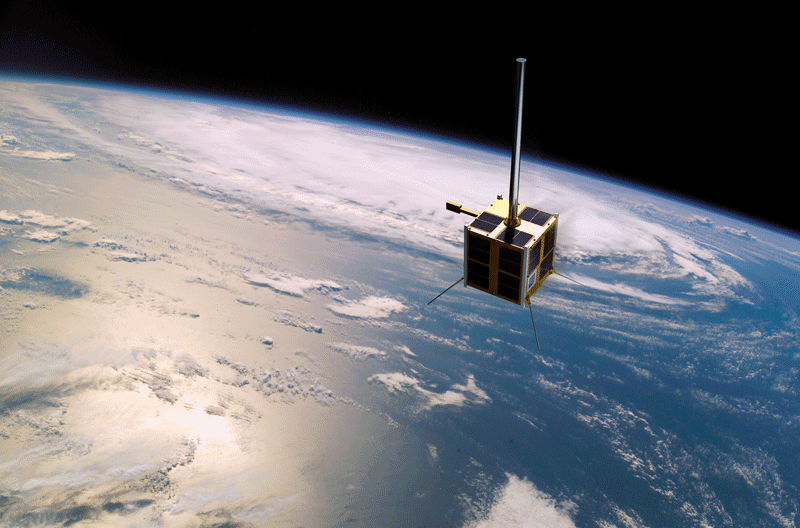
Figure 13.9 The Norwegian satellite (AISSat-1) is improving surveillance of maritime activities in the High North.
Image: Norwegian Defence Research Establishment/NASA/Norwegian Space Centre/nyhetsgrafikk.no.
North Norway, Svalbard and the sea areas in the High North are ideally placed to make use of data from polar orbiting satellites for practical, industrial or research purposes. Satellites in polar orbit provide the most accurate information about the Earth. They also provide better coverage near the poles than near the equator. Ground stations in the High North are therefore best placed to receive data collected by these satellites. In addition, the vast sea areas and lack of other infrastructure in the region mean that there is a particularly strong need for satellite data.
Much of Norwegian space-related activity is carried out by government agencies, institutes and companies based in the High North. The Government has taken steps to facilitate the further development of space-related activity in the High North, for example through efforts to revitalise the work of the Andøya Rocket Range and participation in the development of the European satellite navigation system Galileo.
The research results obtained during International Polar Year (2007–08) show that satellite data is particularly useful for research in the polar regions. This is because satellites are able to collect data from vast, inaccessible areas, whatever the weather or light conditions. The satellites collect data rapidly, often from polar orbit. The data can then be downloaded quickly.
Space-related activity in Norway is important both for meeting Norway’s national needs and in terms of providing services for international clients. The Government’s space-related efforts are particularly significant for the High North. A relatively large part of space research and space-related activity is carried out in North Norway and in Svalbard, for example at the rocket launch sites on Andøya island and in Svalbard, at the EISCAT radar facility, the ALOMAR Observatory at the Andøya Rocket Range and the Kjell Henriksen Observatory (formerly the Auroral Station) at Breinosa near Longyearbyen.
Svalbard Satellite Station (SvalSat), the large satellite ground station on Spitsbergen, is operated by Kongsberg Satellite Services. The Norwegian Space Centre owns the fibre optic cables that link Svalbard to the mainland, enabling important satellite data to be distributed rapidly to customers around the world and at the same time providing other users in Svalbard with good bandwidth. Kongsberg Satellite Services is also the world’s leading provider of oil spill detection services to European environmental authorities. Radar satellites can also be used to monitor maritime traffic far out at sea. Today, maritime traffic is monitored using the Automatic Identification System (AIS), which transmits information to the Norwegian Coastal Administration base stations on shore. The system transmits data about the position of the ship as well as its speed, course, cargo and name. But these signals are only picked up if the vessel is less than 40 nautical miles from land. The new satellite AISSat-1 will now make it possible to monitor all vessels far from land and around Svalbard.
The Government’s space-related initiatives have resulted in a number of contracts and assignments for Norwegian high-technology companies, both through European Space Agency programmes and through the commercial market. Norway is also participating in the development of Europe’s new satellite navigation system, Galileo, which is due to become operational in 2014. Once fully deployed, Galileo will consist of 30 satellites and will provide better satellite coverage in the far north as well as a range of new services. The SvalSat satellite station is currently the ground station for several of the polar-orbiting Earth observation satellites, including the European environmental satellite Envisat and the meteorological satellite MetOp-A. SvalSat will also serve as a ground station for the Galileo satellite system. It is one of a total of three Galileo ground stations on Norwegian territory. The second is based at the Troll research station in Antarctica and the third is on Jan Mayen. These stations will enhance the reliability and accuracy of the signals, both in our areas and globally. SvalSat will also function as an uplink station and will transmit correction messages to the satellites when necessary.
The Government has contributed to the development of space infrastructure that is particularly useful for the High North through Norway’s participation in the Galileo programme and the launch of the AISSat-1 satellite. The Government intends to continue its efforts to strengthen space-related activity in the High North.
13.7 Tourism
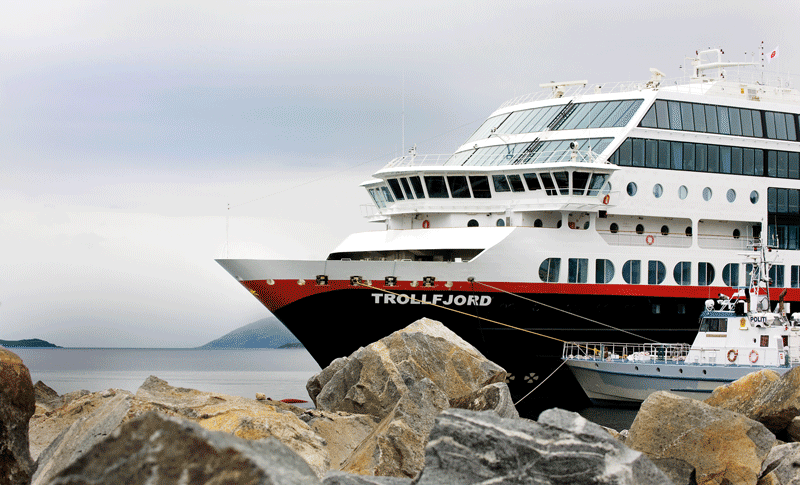
Figure 13.10 One of the Hurtigruten ships.
Photo: Innovation Norway
Tourism is important for business development in North Norway and is a priority area in the Government’s High North policy. The primary responsibility for ensuring that the industry develops in such a way that it provides high-quality products and experiences lies, however, with the relevant actors in the region. Funding has been provided for a research and competence-building project in Arctic tourism at Finnmark University College through the Ministry of Foreign Affairs’ Barents 2020 grant scheme.
The Ministry of Trade and Industry is currently updating the Government’s 2007 tourism strategy, which gives special mention to the High North and the Sami areas. The strategy states that there is a need for greater coordination across the borders of the three counties of North Norway and that the region would benefit from a joint, focused marketing strategy for the foreign market. In 2009, in response to this, the Ministry of Local Government and Regional Development provided NOK 50 million in funding for the establishment of Nordnorsk Reiseliv AS. The company is owned by the three counties of North Norway and has its head office in Alta. Nordnorsk Reiseliv’s four main focus areas are natural phenomena, the coast and coastal culture, Sami culture and experiencing the Arctic. The establishment of Nordnorsk Reiseliv has provided a basis for strengthening the profile of the tourism and travel industry and international marketing of North Norway. Developing year-round tourism, particularly winter tourism, is a challenge for the industry and the authorities. Various actors in the region have expressed the need to make North Norway more accessible by improving infrastructure and the coordination and predictability of public transport services.
Of the funding provided by the Ministry of Trade and Industry for Innovation Norway’s tourism-related efforts, NOK 15 million has been earmarked for promoting North Norway. Arctic Norway is one of the four key elements in Innovation Norway’s branding strategy for Norway as a tourist destination. Through Innovation Norway, the Ministry of Local Government and Regional Development has provided funding for a project on tourism in the High North, which seeks to strengthen innovation, competitiveness and profitability in tourism companies in North Norway.
Tourism in Svalbard is based on the unspoilt natural environment. There is potential for further growth in this area, particularly outside the high season. The Government intends to promote tourism in Svalbard and has an overriding goal to ensure that Svalbard is one of the world's best managed wilderness areas and the best preserved Arctic tourist destination in the world. The ambitious environmental targets and the environmental legislation that have been developed for Svalbard will provide a framework for the development of tourism. In addition, the Governor of Svalbard is drawing up management plans for the protected areas in Svalbard, which cover 65 % of Svalbard’s land area and 86 % of its territorial waters. The plans will be an important tool for managing the development of different forms of transport and weighing up different user interests in accordance with the purpose of protection. Tourism developments in Svalbard must adhere to strict safety and environmental standards. As discussed in the most recent white paper on Svalbard (Report No. 22 (2008–2009) to the Storting), the Government will take steps to facilitate the further development of tourism as one of Svalbard’s main industries. This development must not take place at the expense of the natural environment and the archipelago’s cultural heritage.
Tourism is also a key component of our cooperation with neighbouring countries. A separate working group for tourism has been set up under the Russian Governmental Commission on Economic, Industrial and Scientific-Technical Cooperation. The working group meets regularly to discuss tourism development in the High North. Tourism has also been identified as an area of special interest for the Northern Dimension Partnership on Culture.
The value creation programme for combined business activities and Sami tourism was established in 2008. The Sami Parliament (Sámediggi) is responsible for administering the programme. The aim of the programme is to increase value creation by focusing on and developing innovative combinations of business activities and Sami tourism. In the period 2009–11, NOK 8.5 million a year was allocated to the programme.
13.8 Arctic agriculture and reindeer husbandry
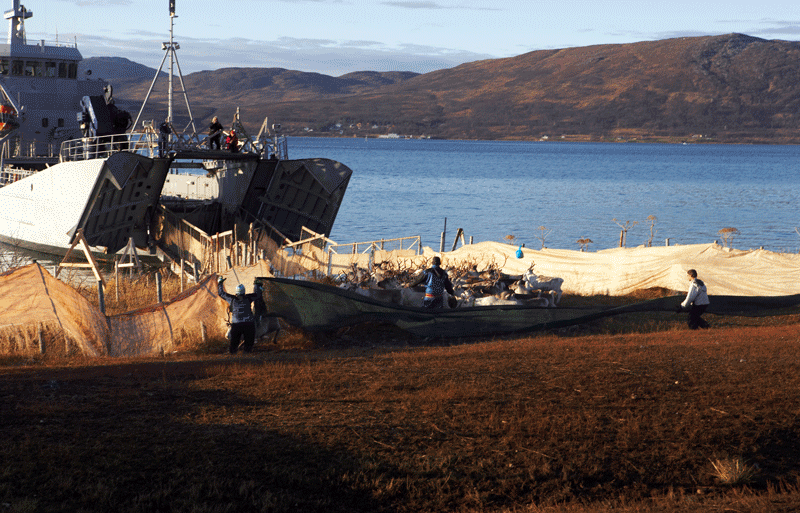
Figure 13.11 Every year, reindeer are transported by boat from the mainland to summer pastures on the islands and outer districts of northern Troms and Finnmark.
Photo: Per Oscar Skjellnan, ©Reindriftsforvaltningen
Agriculture occupies a central place in the High North policy because it plays an important role in maintaining a dispersed settlement pattern, in sustainable use of natural resources and in maintaining the cultural landscape. Agriculture and its related value chain generate a large number of jobs and a significant local food production sector. New products and services, including nature-based tourism opportunities, can be developed on the basis of agricultural and food production. It is important to ensure the development of a coherent policy for Arctic food production and to increase coordination between blue-collar and green-collar primary industries in the region. New knowledge gained from research activities is needed if we are to be able to exploit the potential of Arctic agriculture.
Ensuring that agriculture remains decentralised across the whole of North Norway is important for maintaining settlement patterns. Agriculture also has a key role to play in preserving the cultures and traditions of indigenous peoples. The Government considers it important to strengthen and further develop Arctic agriculture and will facilitate increased value creation by promoting agricultural production that is suited to the natural conditions in the region, while ensuring that biodiversity and ecosystems are maintained.
The long hours of daylight and low temperatures in North Norway produce very unusual growing conditions that have a noticeable impact on agricultural products. There is also growing interest in food products that are regional specialities. These factors combined mean that there is considerable potential for growth in food production in North Norway.
Research on the adaptation of plant production in North Norway to a changing climate is essential to ensure that agriculture in the region is competitive. It is crucial in this context to strengthen knowledge production and ensure that new knowledge continues to be generated in the region. Efforts to exploit new business opportunities should be designed to promote coordination between blue-collar and green-collar primary industries in the region.
Climate change is creating unstable weather patterns and more frequent extreme weather events and drought. This is having a noticeable impact on agriculture in a number of parts of the world. In many areas agricultural production may decline, while in others, changes in temperature and precipitation may have positive effects on agriculture. In Norway there are strong indications that a moderate rise in temperature will lengthen the growing season and will make it possible to increase agricultural and forestry production. Climate change could therefore result in new opportunities for agriculture in the High North.
The Government considers it important to develop agricultural cooperation across national borders in the High North. The joint declaration on enhanced Norwegian-Russian cross-border cooperation of 2010 identifies plant breeding, fodder production, the development of elite seeds from Nordic plant varieties and the development of reindeer husbandry as particularly interesting areas of cooperation in the field of agriculture.
Reindeer husbandry is one of the few livestock industries in Norway that makes year-round use of grazing areas. The nomadic nature of reindeer herding, involving migration between seasonal pastures, helps to ensure efficient use of grazing resources in the mountains and uncultivated land elsewhere. The reindeer’s diet, which consists primarily of wild plants, makes reindeer meat a tasty and exclusive addition to food variety in Norway. Reindeer husbandry is concentrated largely in Finnmark. In some local communities in the Sami areas, reindeer husbandry plays a crucial role both culturally and in terms of employment. It provides an arena for maintaining and developing the Sami language, as well as Sami crafts and traditional knowledge. The sustainability of the reindeer husbandry industry depends both on factors within the industry and on external factors. Ensuring access to sufficient grazing areas and adapting the size of reindeer herds to the available resources will promote ecological sustainability and are essential for ensuring that reindeer husbandry is also both economically and culturally sustainable.
14 Economic and administrative consequences
The purpose of this white paper is to give an overview of developments in the High North since the previous white paper on Norway’s High North policy, Opportunities and Challenges in the North (Report No. 30 (2004–2005) to the Storting).
The implementation of changes in policy and of measures discussed in the white paper will be considered at a later stage, in connection with the annual budget proposals.
The Ministry of Foreign Affairs is responsible for coordinating the Government’s High North policy and for giving an account of the Government’s overall efforts in the High North in its annual budget proposals. Matters relating to the Arctic and the High North are dealt with in various parts of the Ministry. The Section for the High North Project, Polar Affairs, Energy and Resources has the main responsibility for working on and coordinating these matters. The Norwegian diplomatic and consular missions in the Arctic states and other key countries also allocate resources to promoting Norway’s High North policy. This white paper will not lead to any changes in the administrative procedures for dealing with matters relating to the High North at the Ministry of Foreign Affairs or the diplomatic and consular missions.
Footnotes
NOU 2008:5 Retten til fiske i havet utenfor Finnmark (Fishing rights in the sea off Finnmark). (Norwegian only.)
2010: Ministry of Fisheries and Coastal Affairs (NOK 25 million), Ministry of Trade and Industry (NOK 24 million) Ministry of Foreign Affairs (NOK 10 million, Barents 2020 grant scheme).
2011: Ministry of Fisheries and Coastal Affairs (NOK 25 million), Ministry of Trade and Industry (NOK 29 million).
In March 2011, the Government presented its updated management plan for the Barents Sea–Lofoten area. The plan clarifies the overall framework for management of the area, including oil and gas activities.
Regional ringvirkningsanalyse i forbindelse med oppdatering av helhetlig forvaltningsplan Barentshavet-Lofoten (Norwegian only), http://www.regjeringen.no/upload/OED/Rapporter/Ringvirkningsanalyse.pdf
KRD (2010): Deskriptiv analyse – næringer og samfunn i området knyttet til forvaltningsplanen. Descriptive analysis of population and industrial structure in North Norway (Ministry of Local Government and Regional Development, June 2010) (Norwegian only).
Indeks Nordland 2011. (“Index Nordland 2011, Norwegian only)
Source: First update of the Integrated Management Plan for the Marine Environment of the Barents Sea–Lofoten Area, Meld. St. 10 (2010–2011)
Source: Shipping in Arctic Waters, report by Ocean Futures.
Shipping across the Arctic Ocean, Research and Innovation, Position Paper 04 – 2010, DNV
TEU (twenty-foot equivalent unit), standard unit for cargo carrying capacity.
Source: Survey of value creation carried out by Menon Business Economics and Northern Research Institute (Norut) Narvik, commissioned by Maritimt Forum Nord in 2009 (Norwegian only).
Source: En kunnskapsbasert maritim næring (“A knowledge-based maritime sector”, Norwegian only) published by Menon Business Economics in April 2011.
Brazil, Russia, India and China.
Source: Geological Survey of Norway